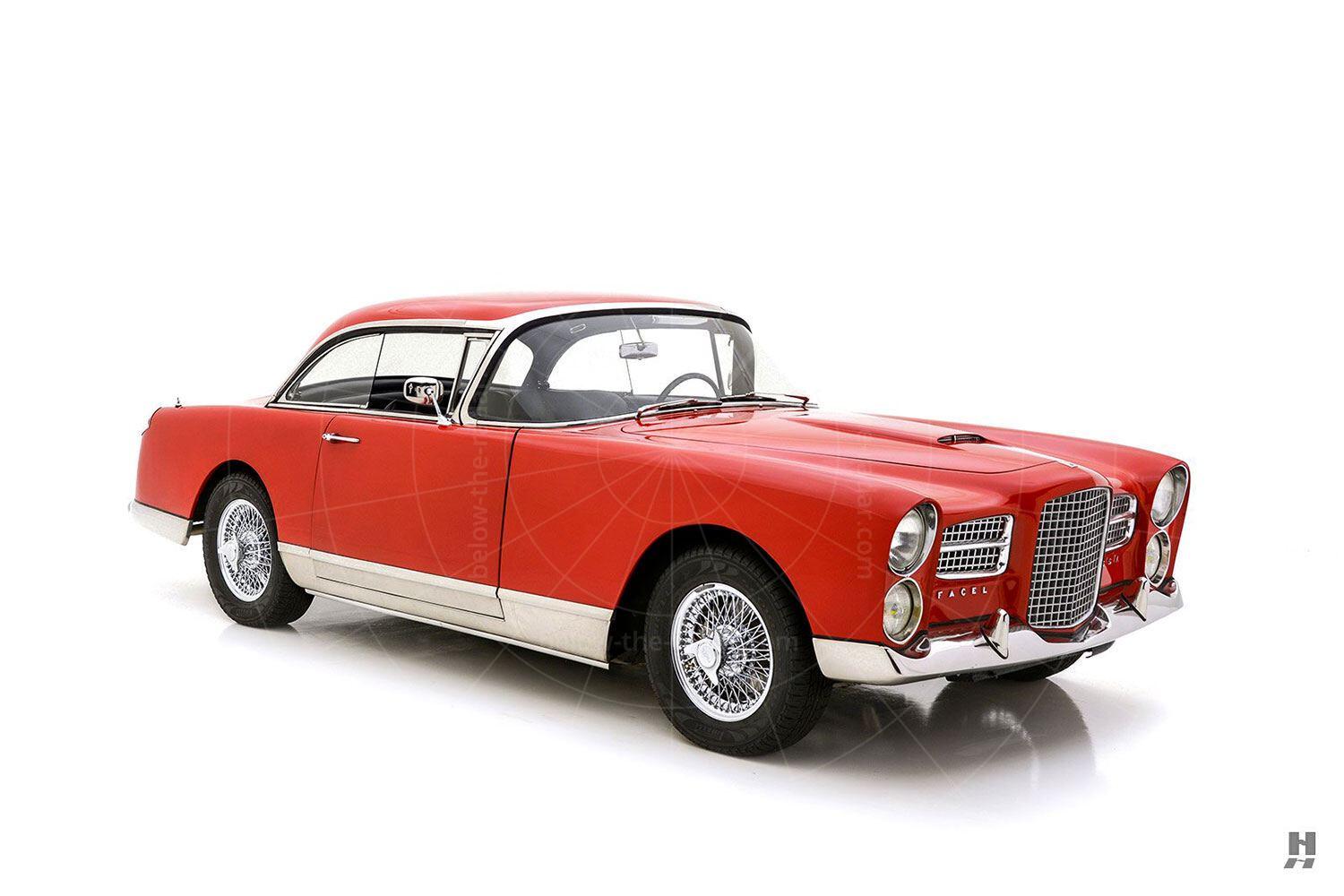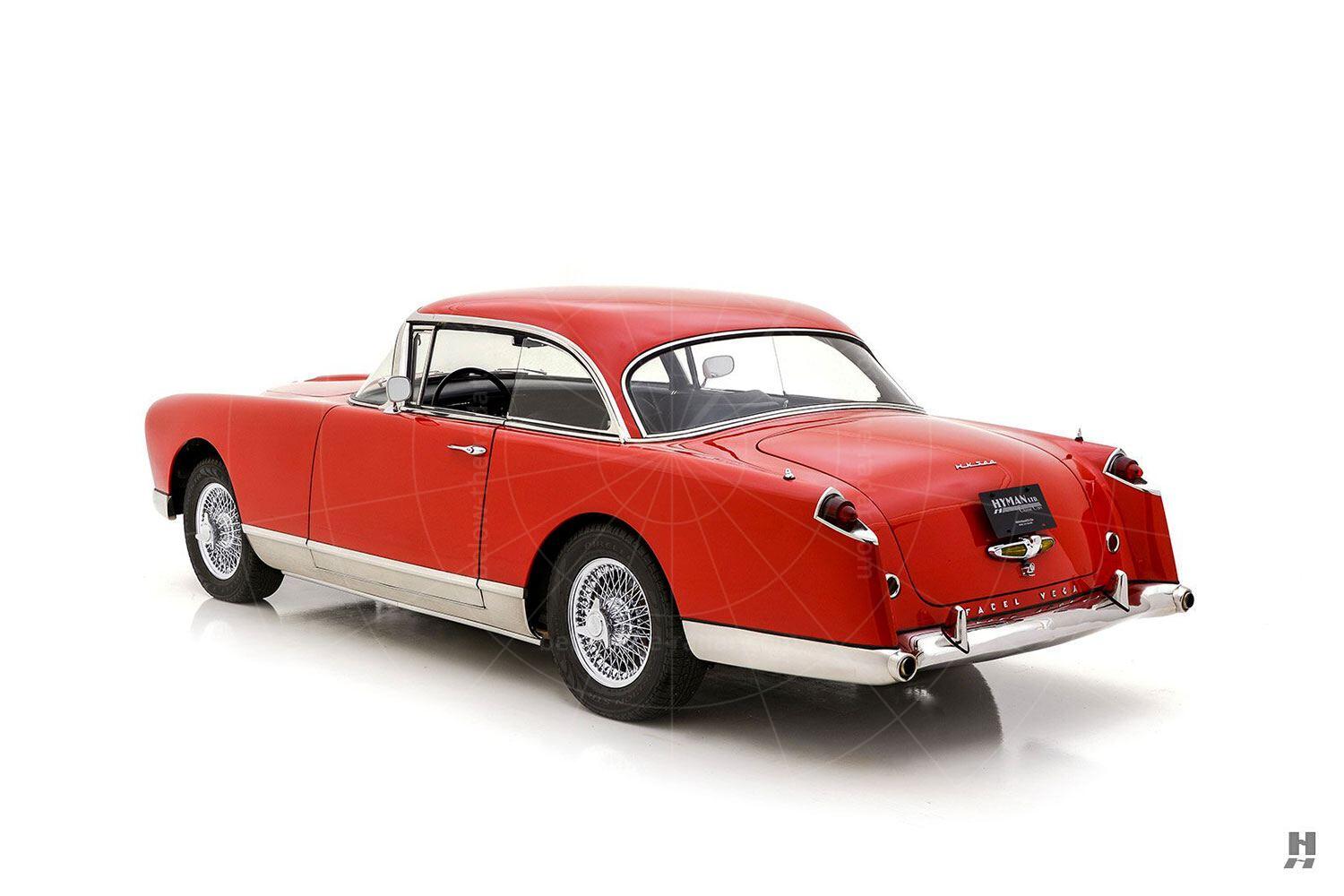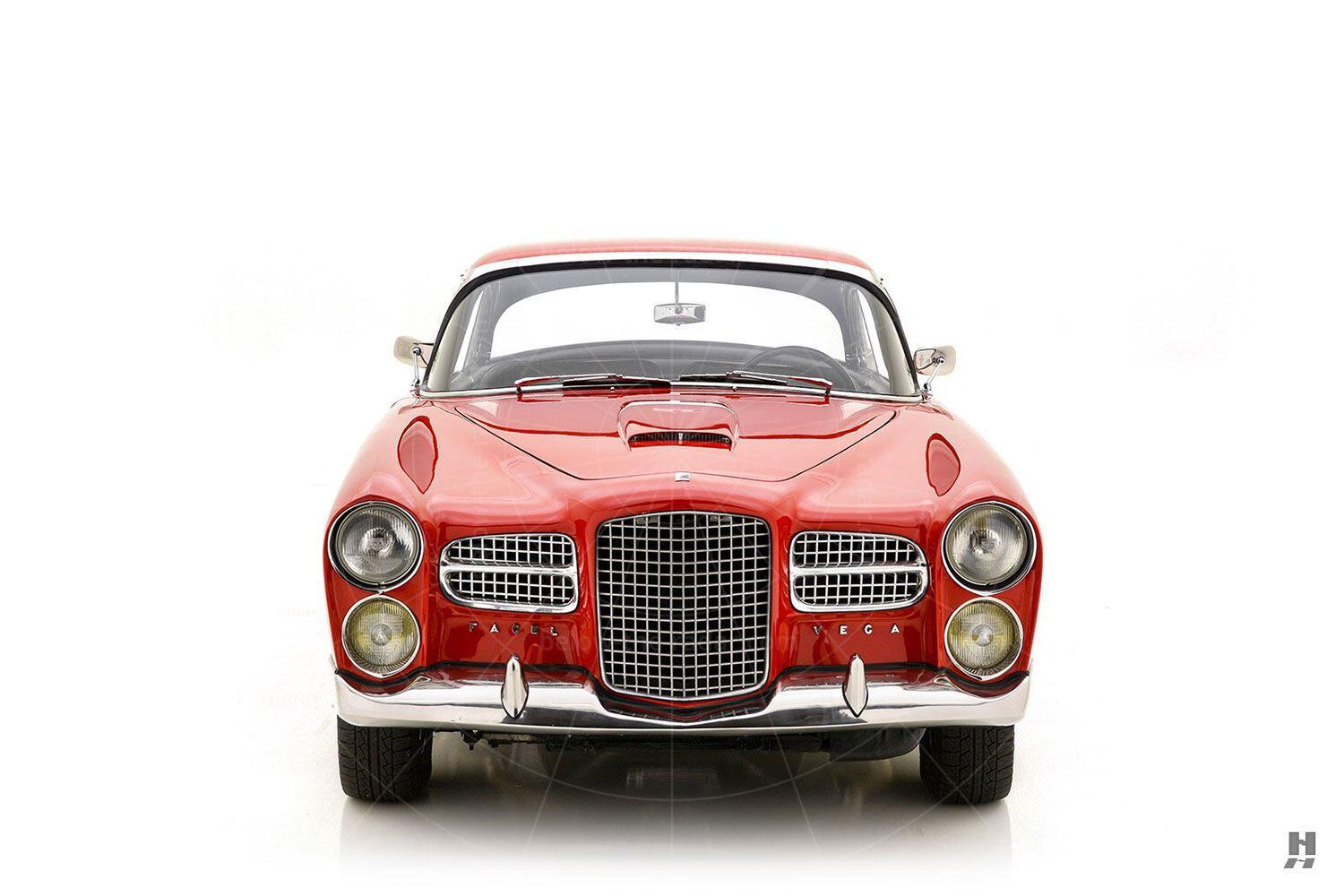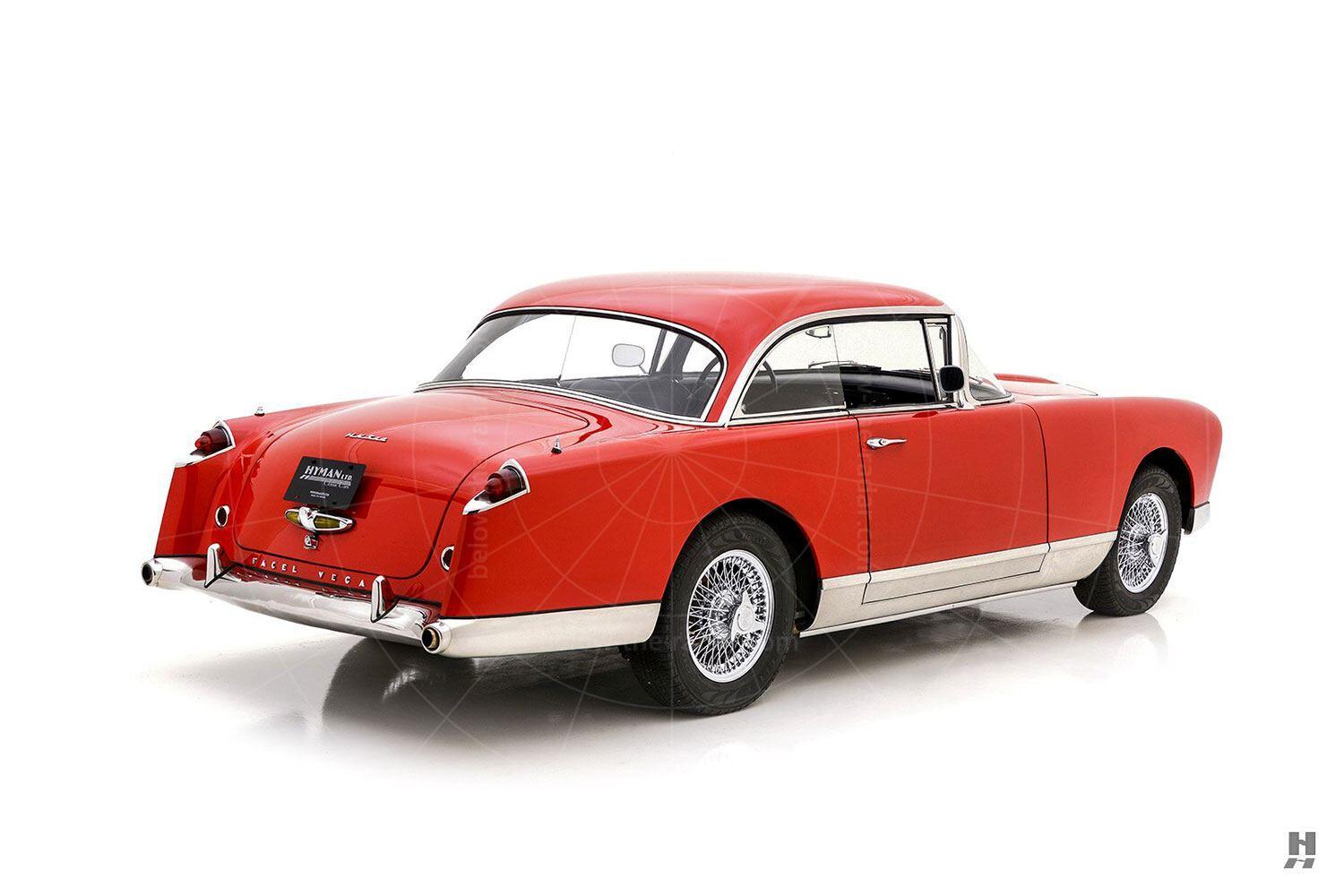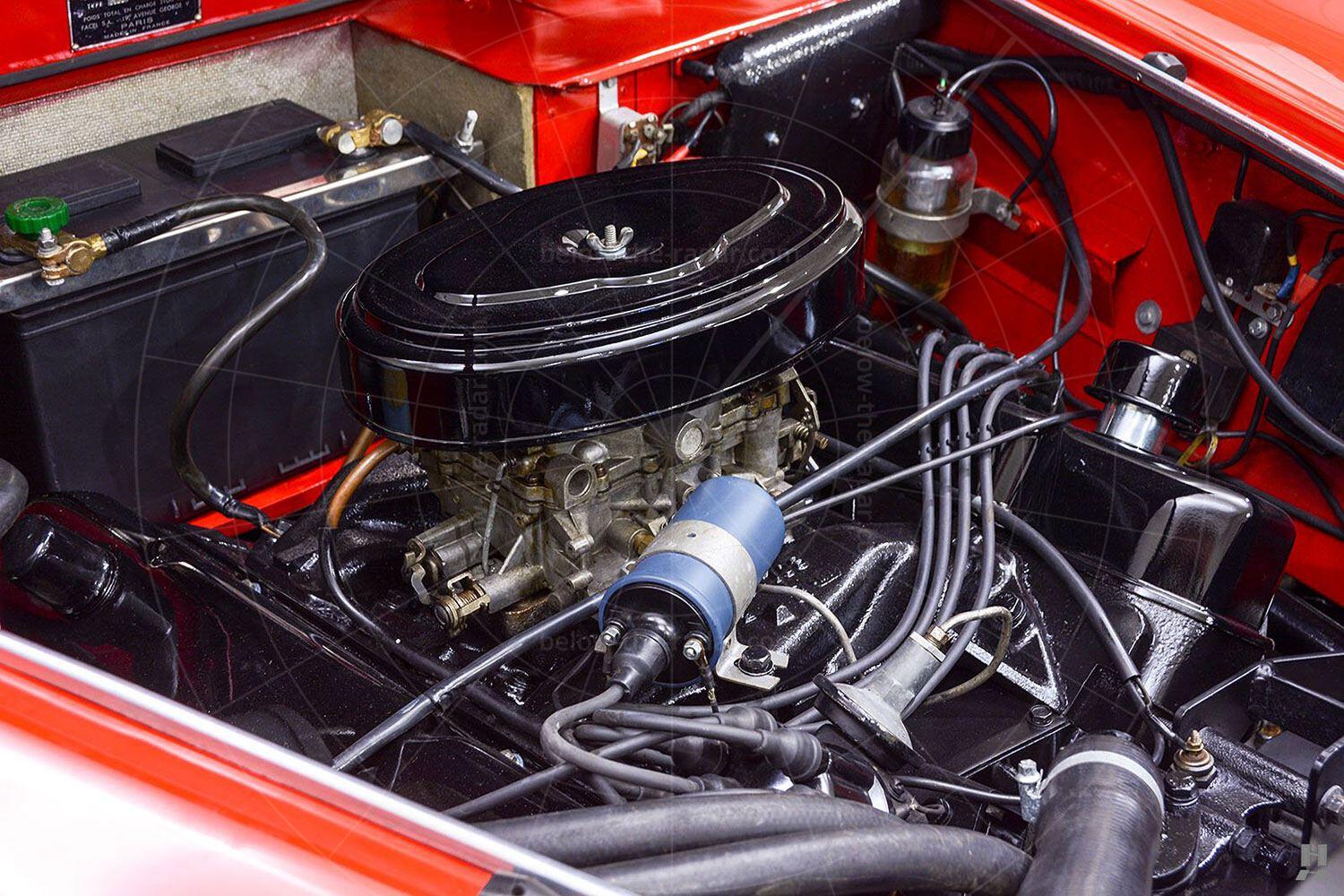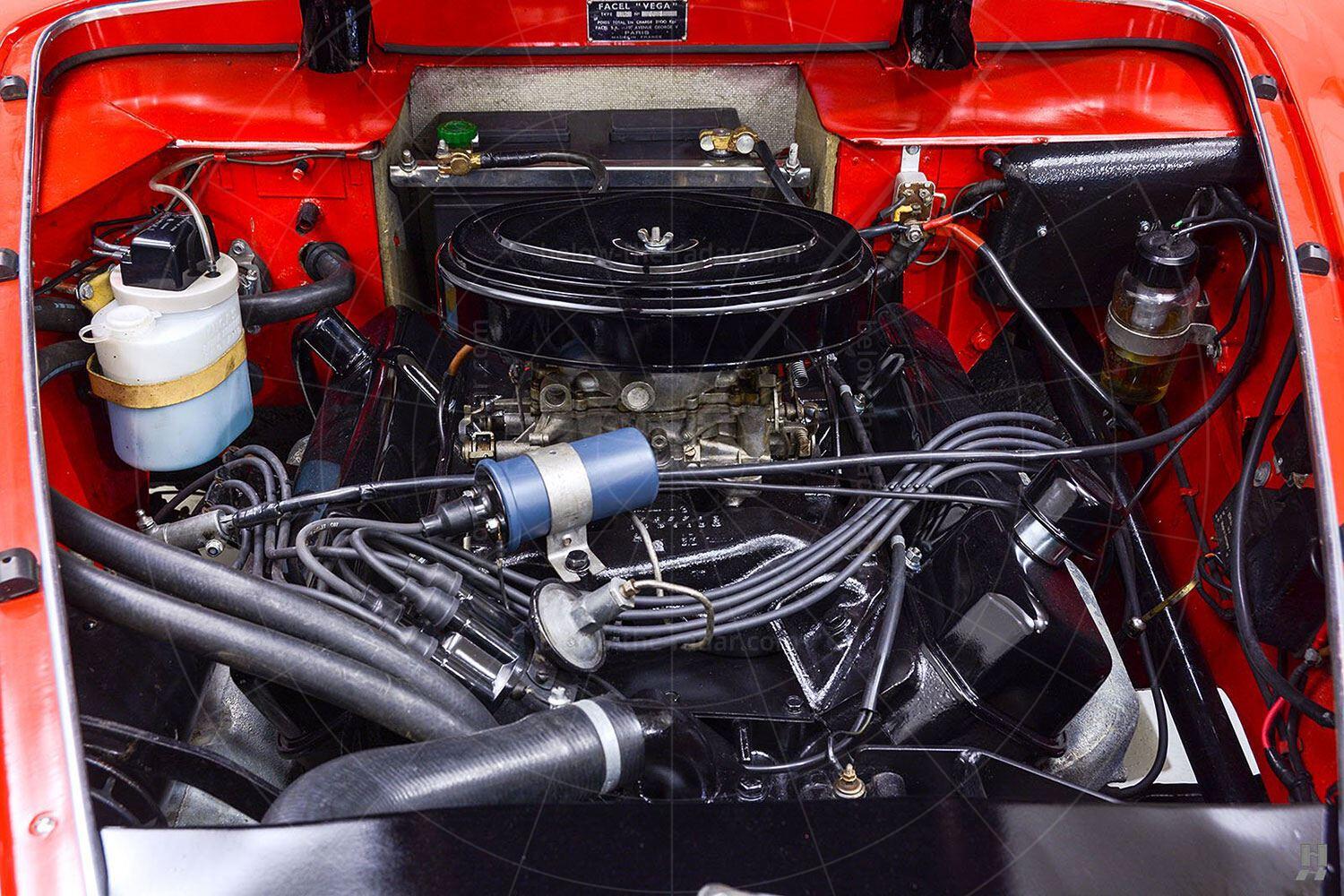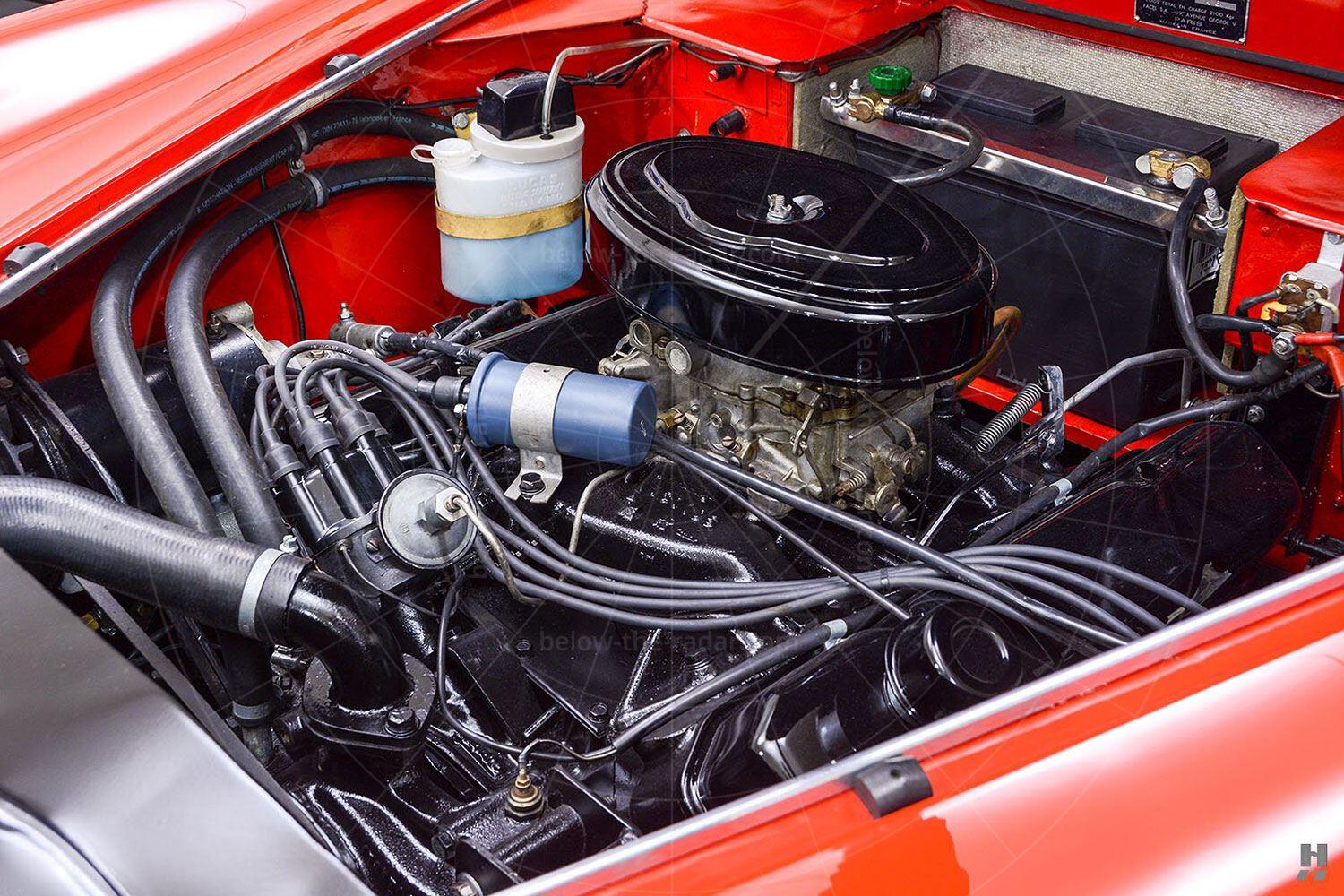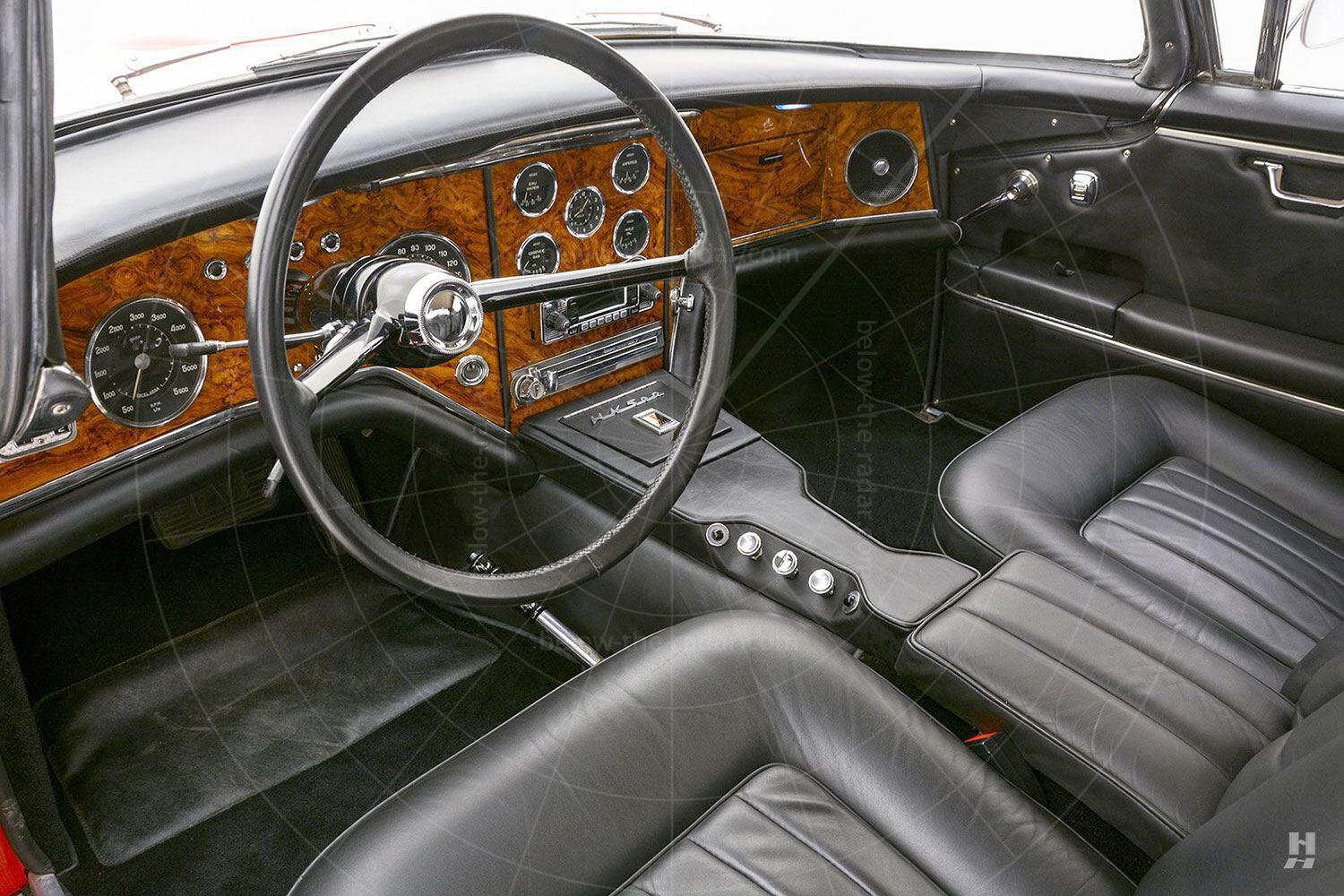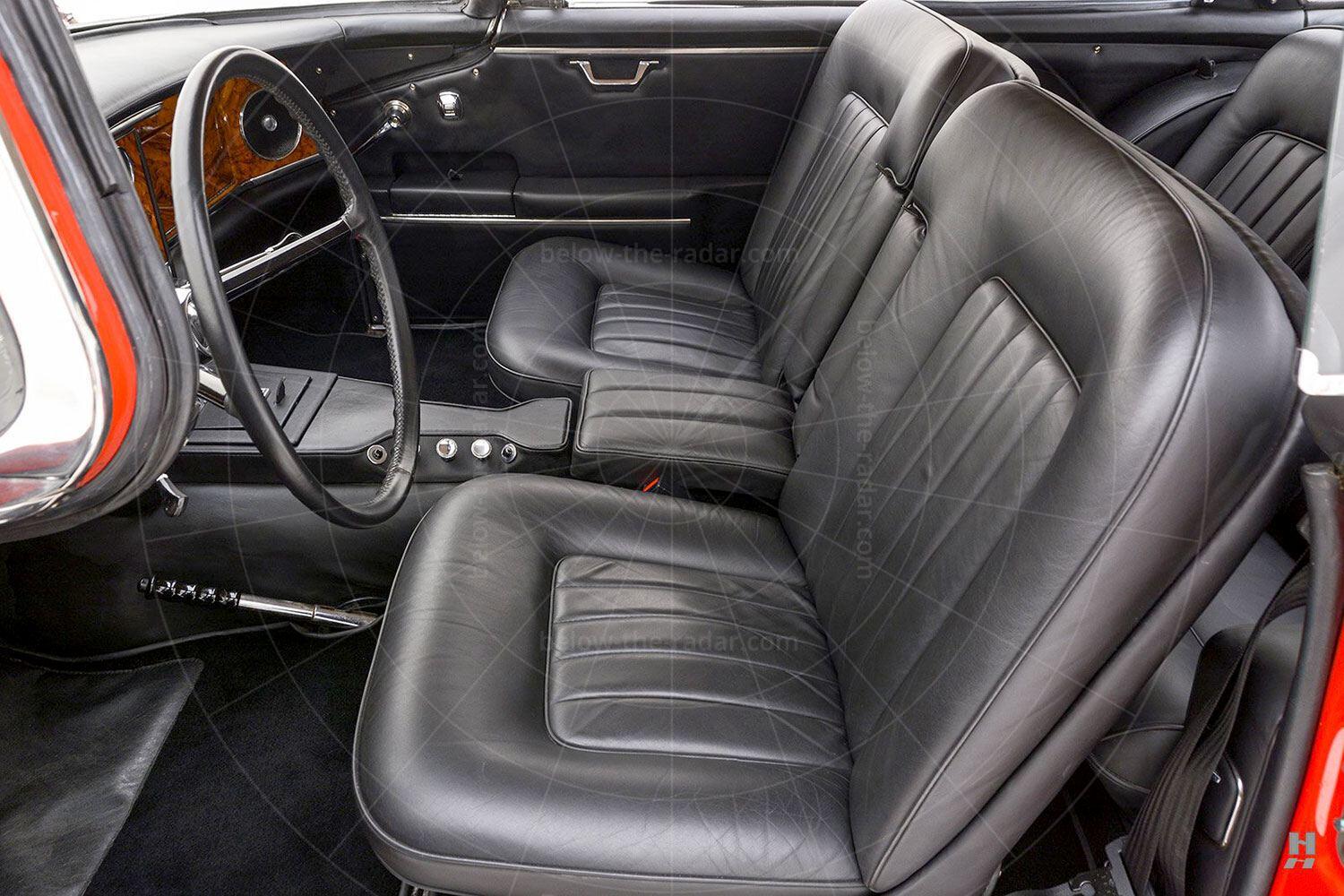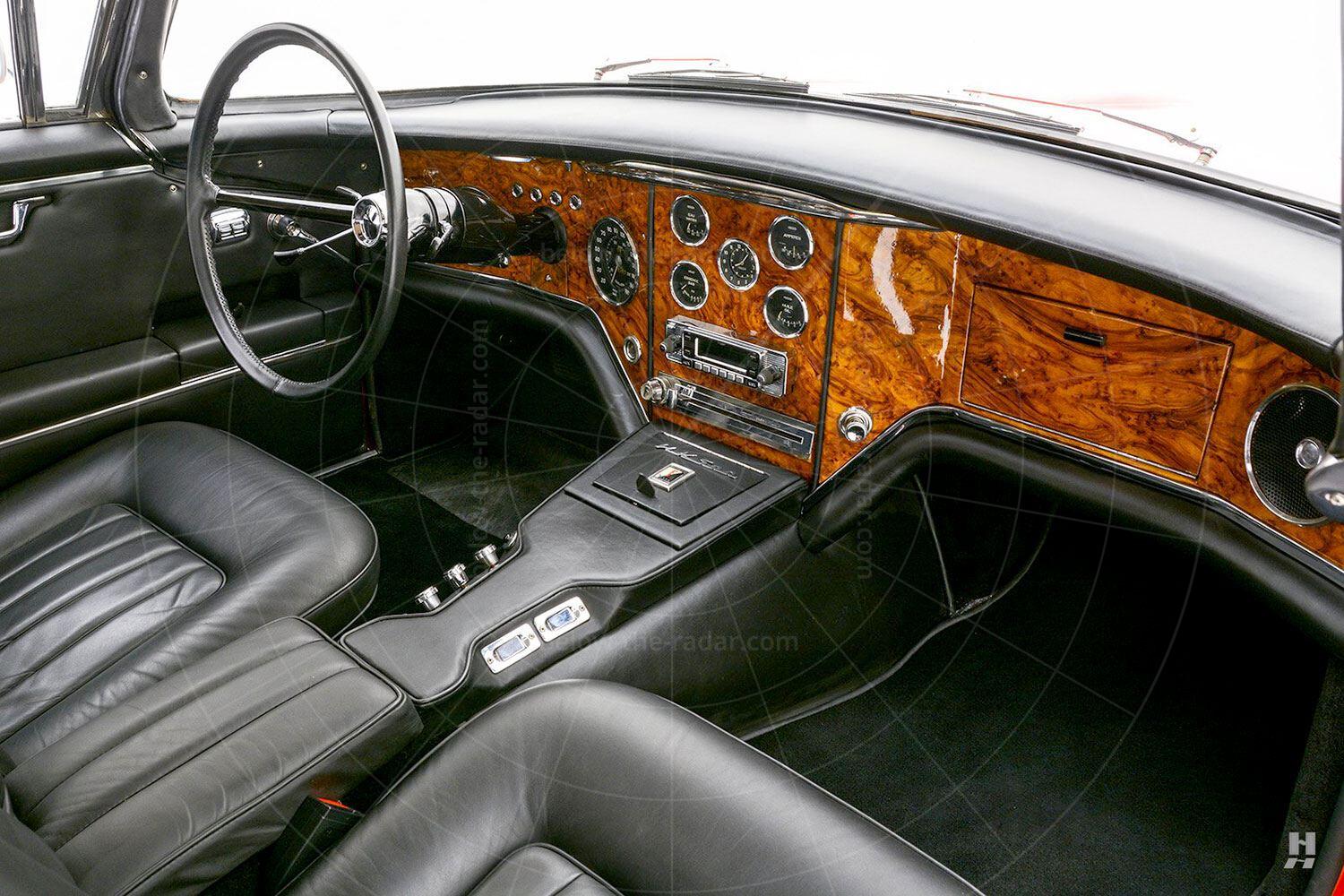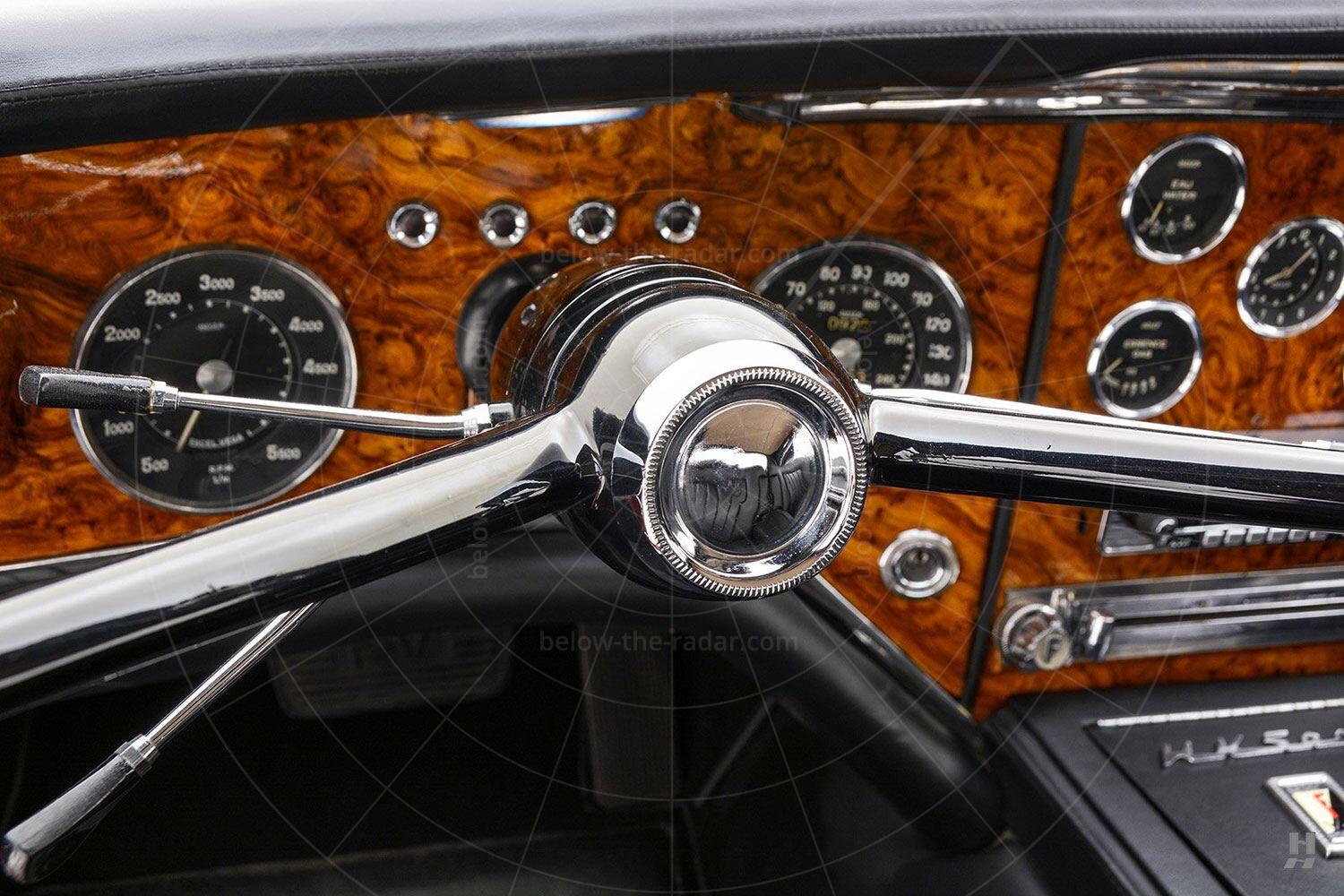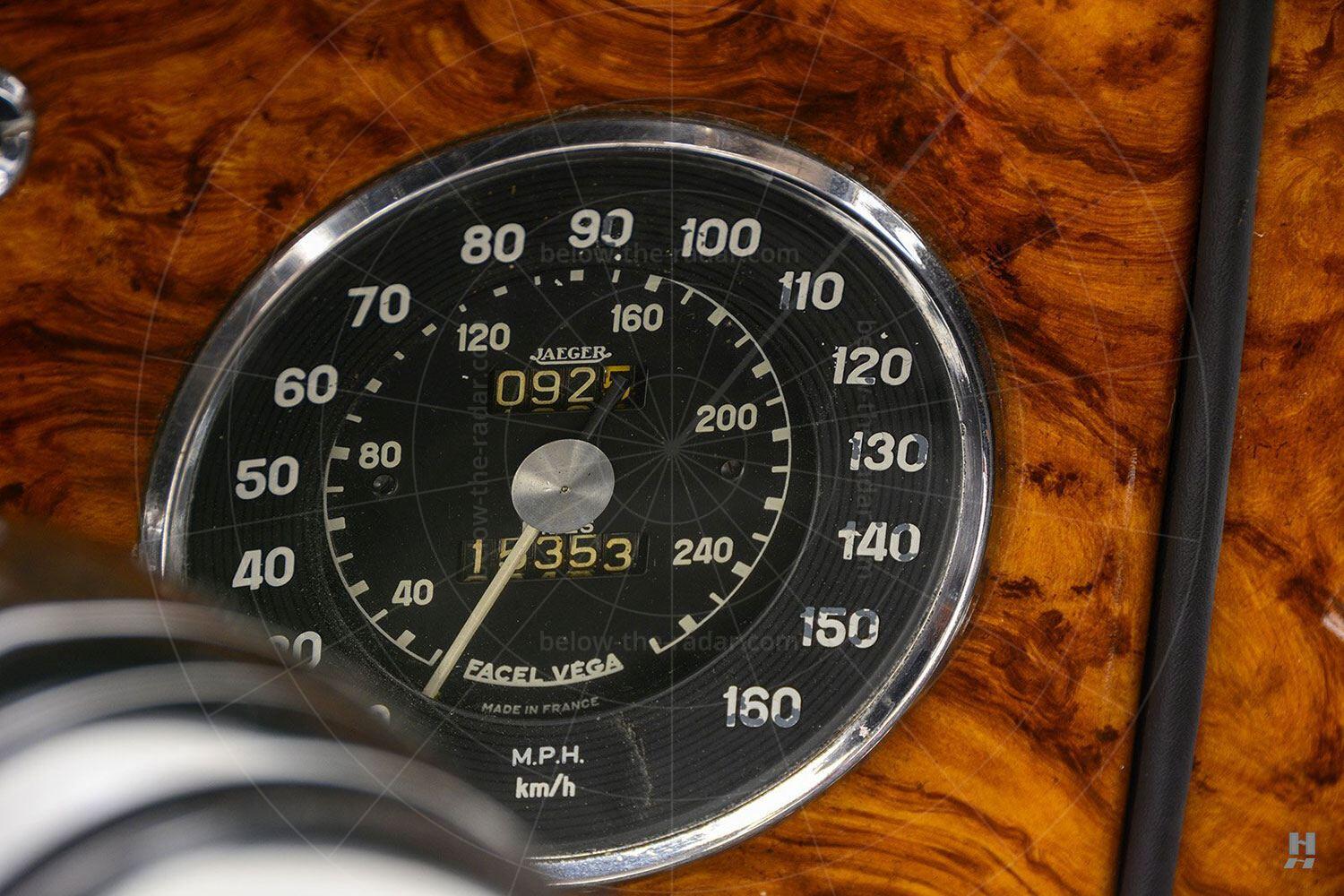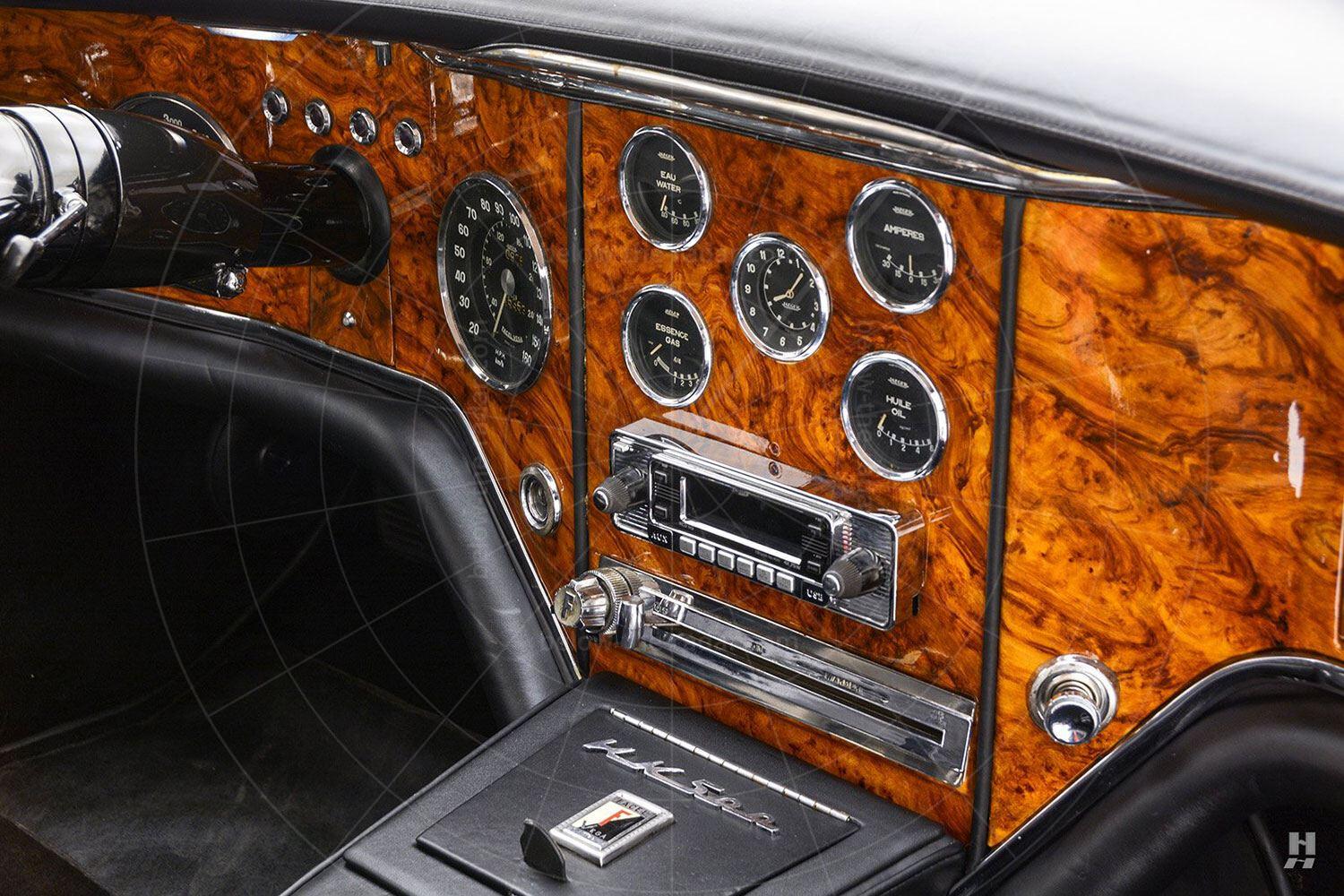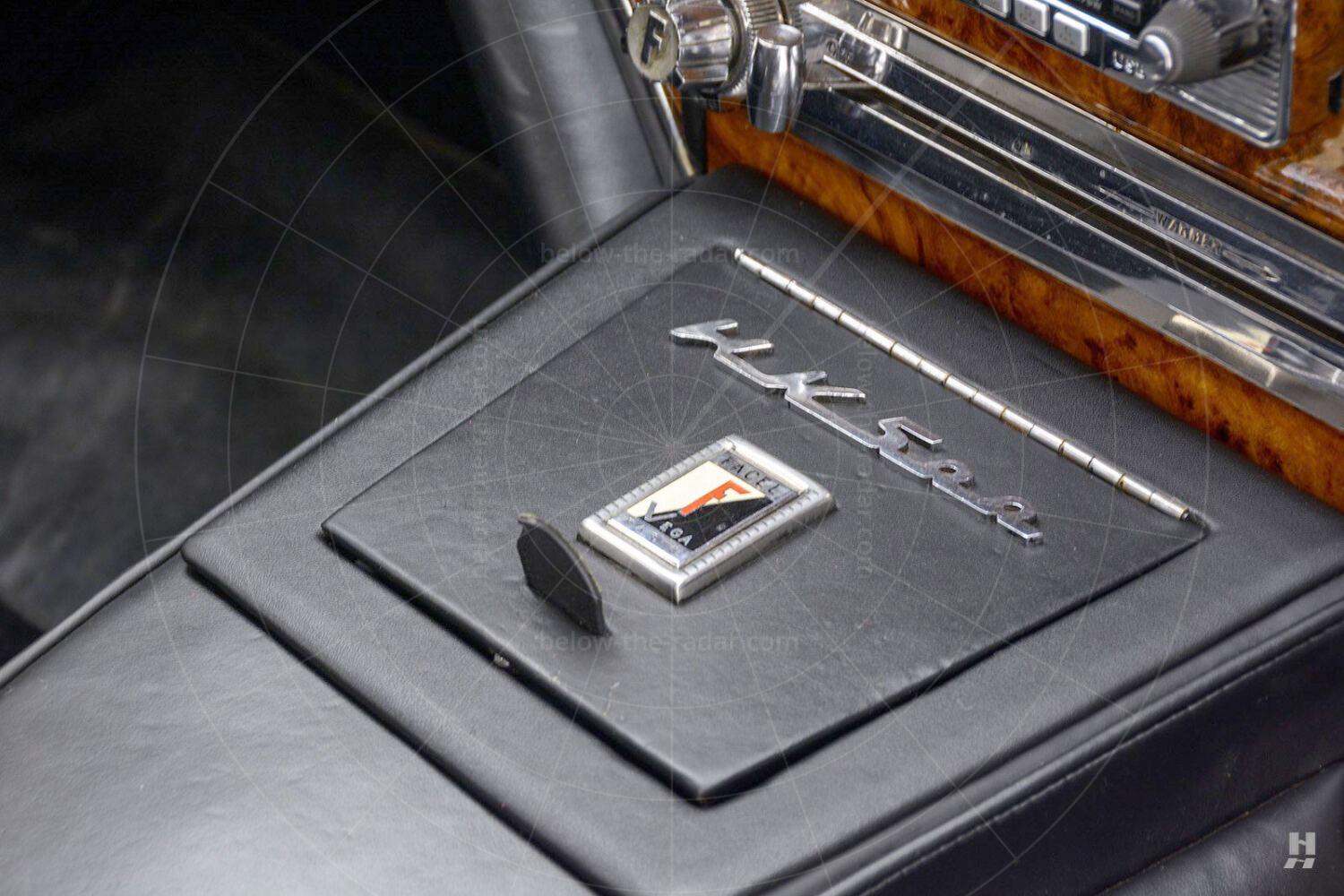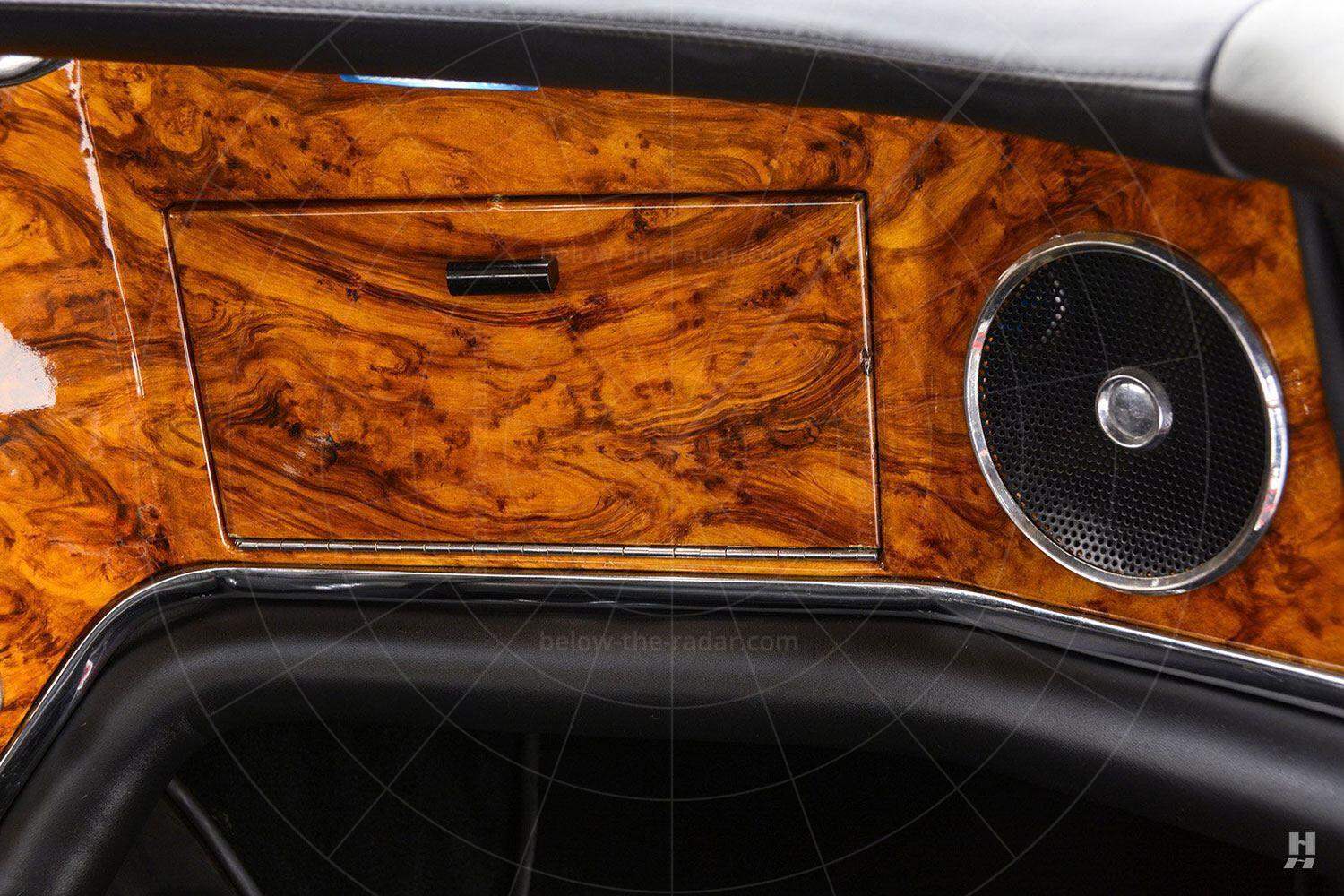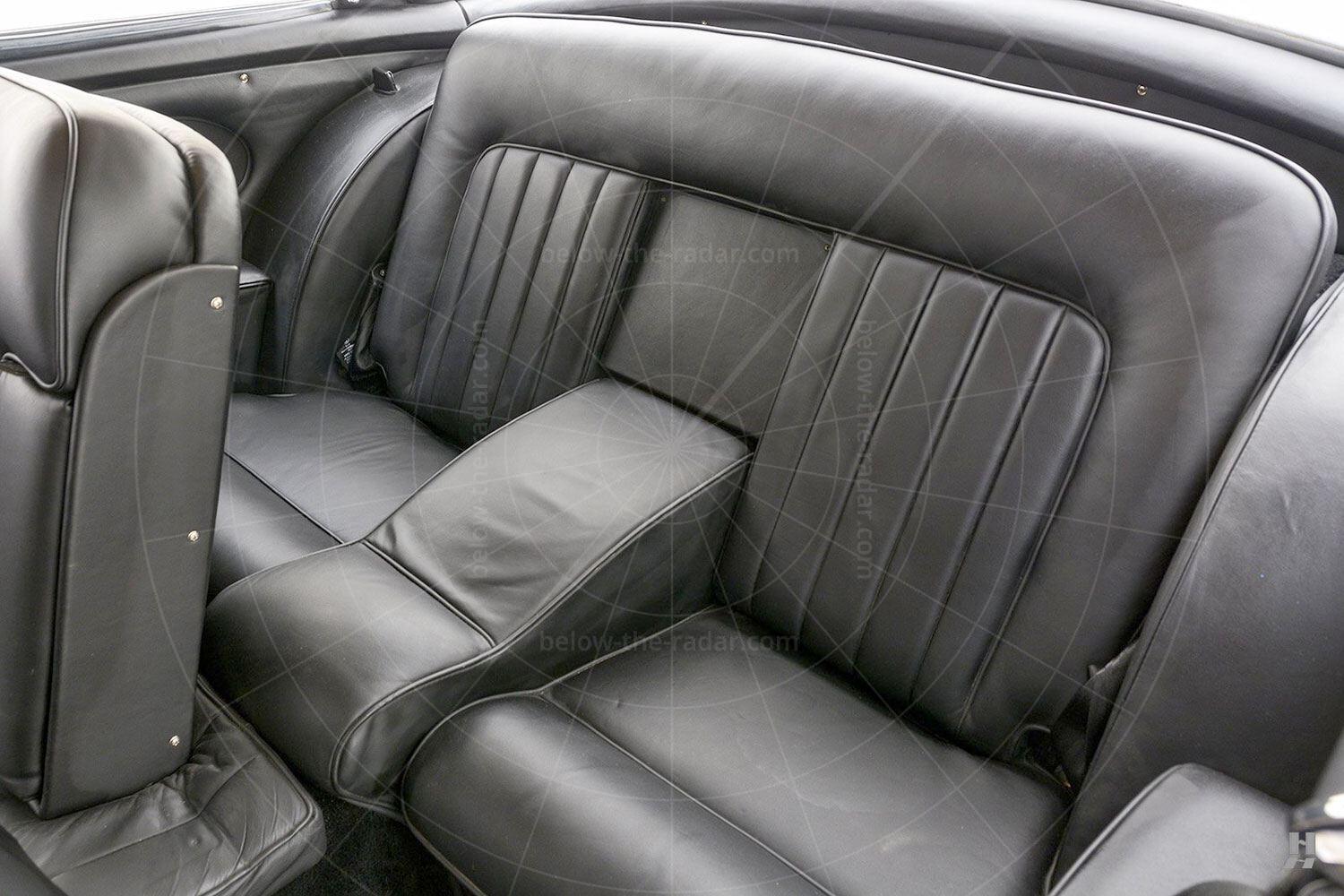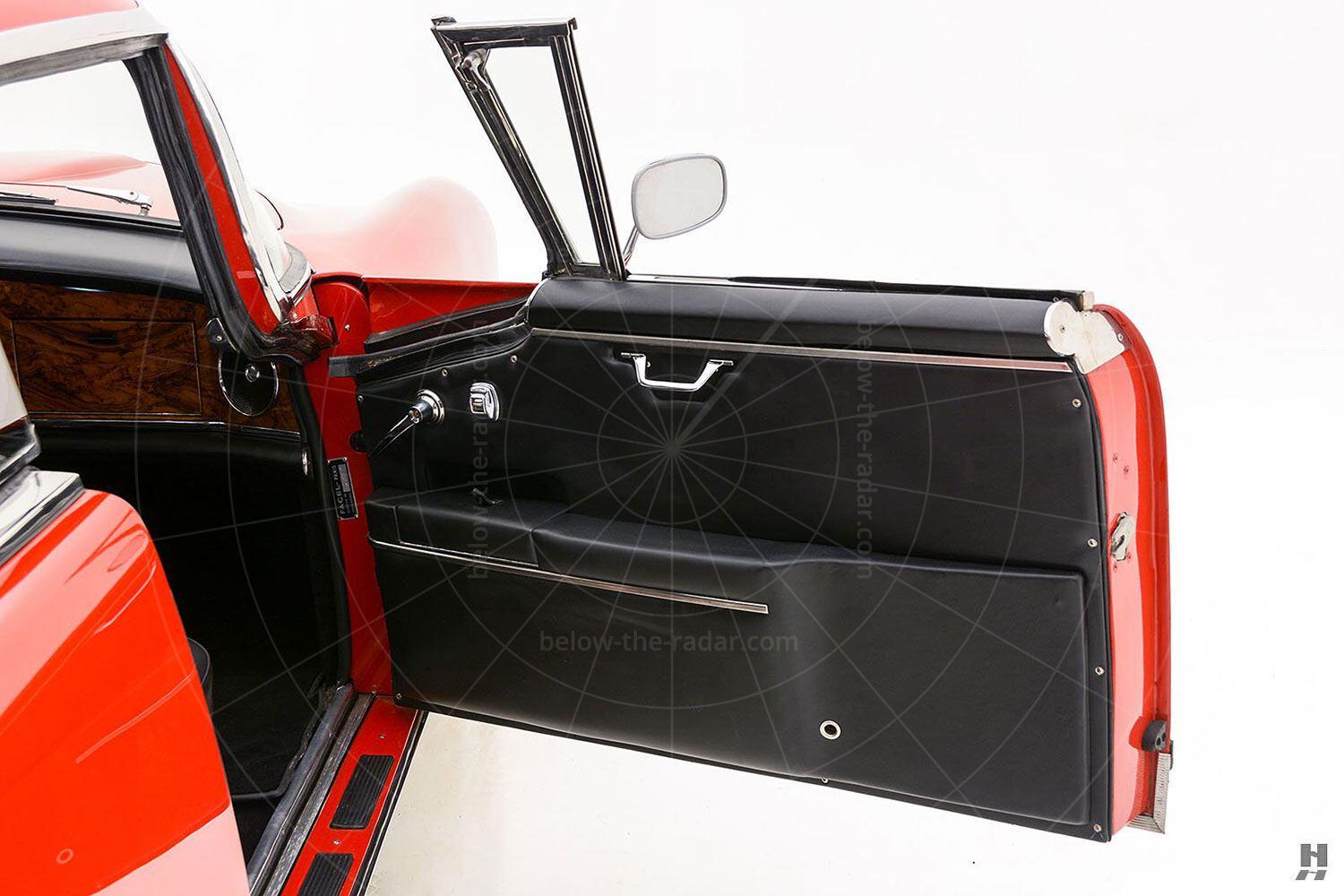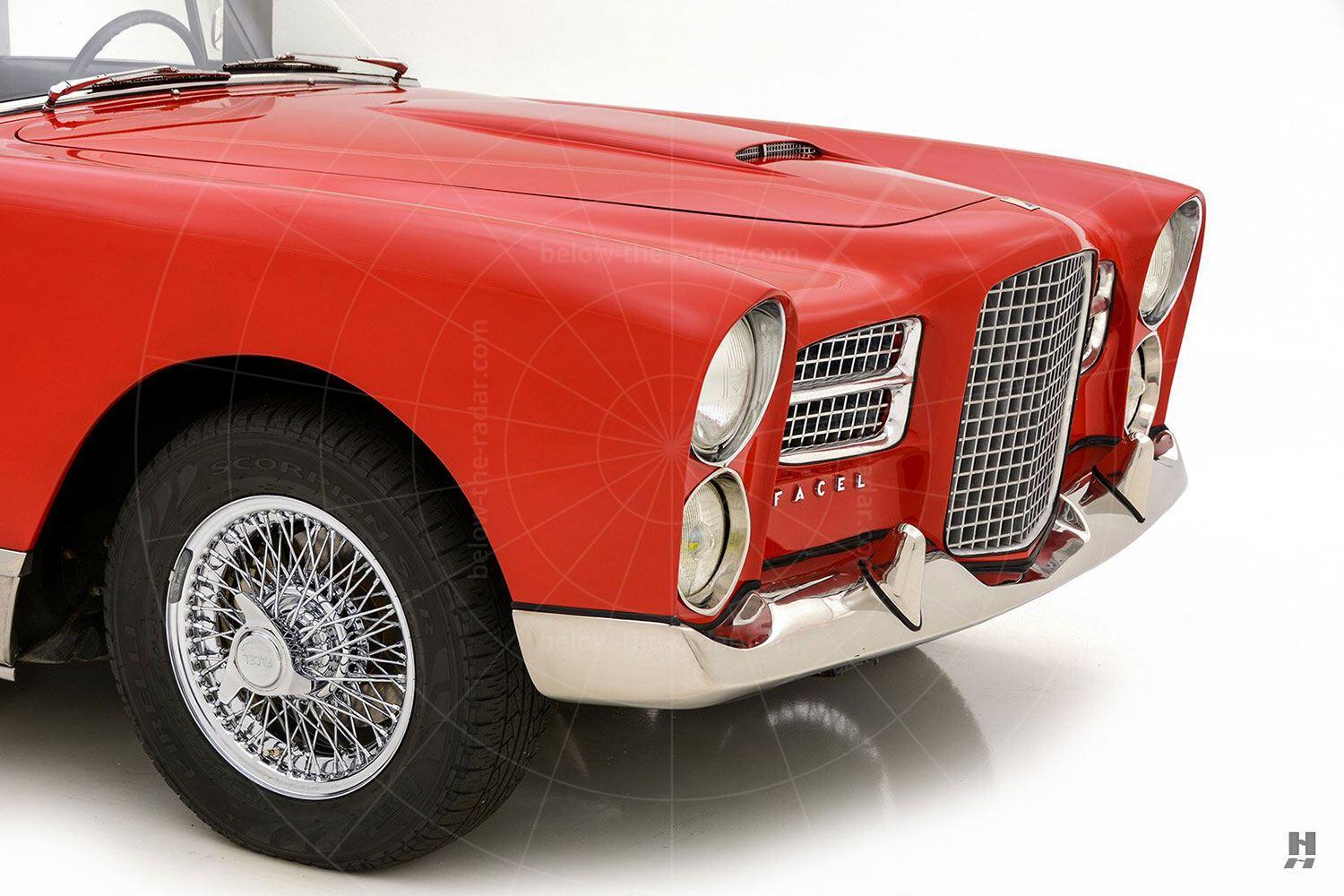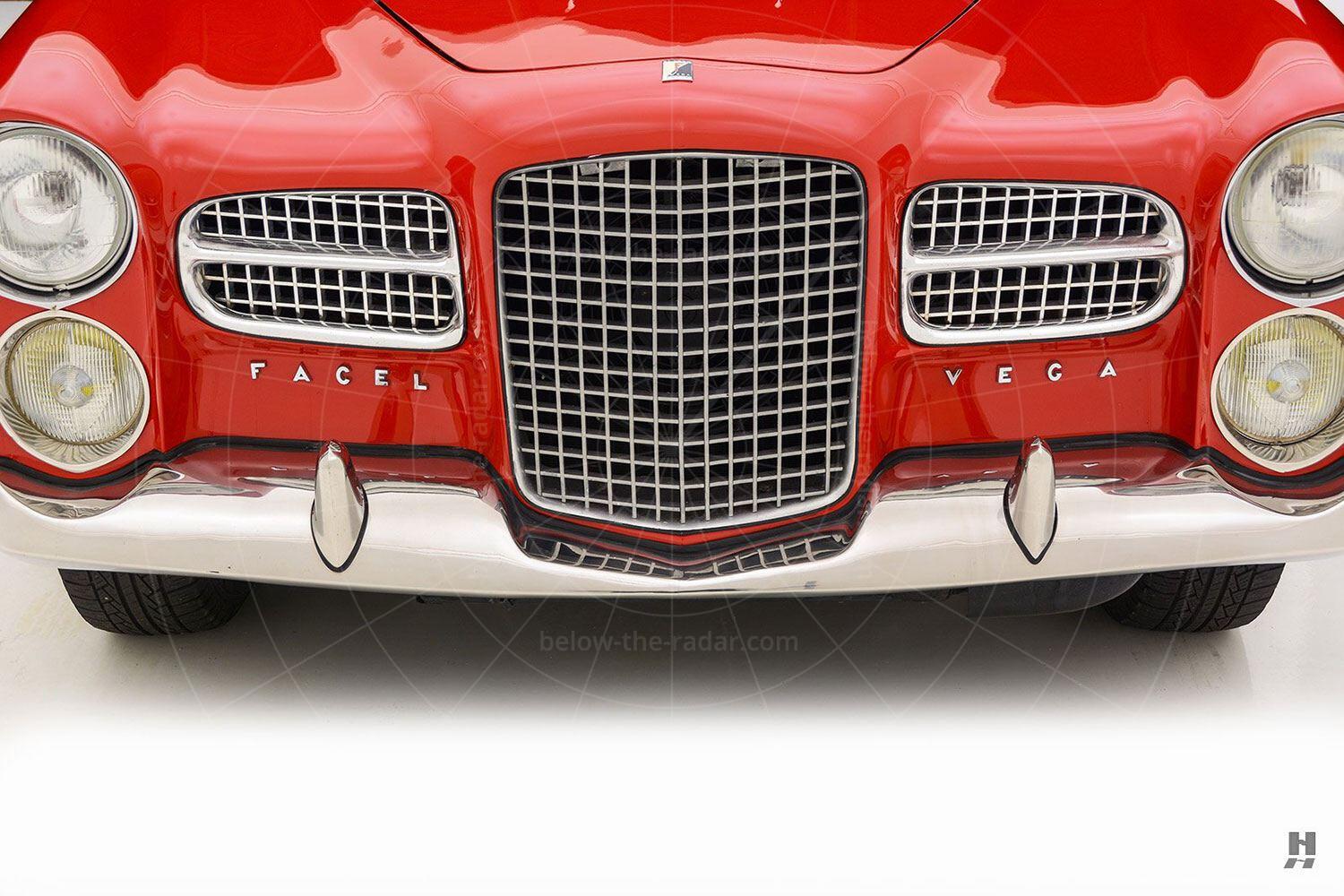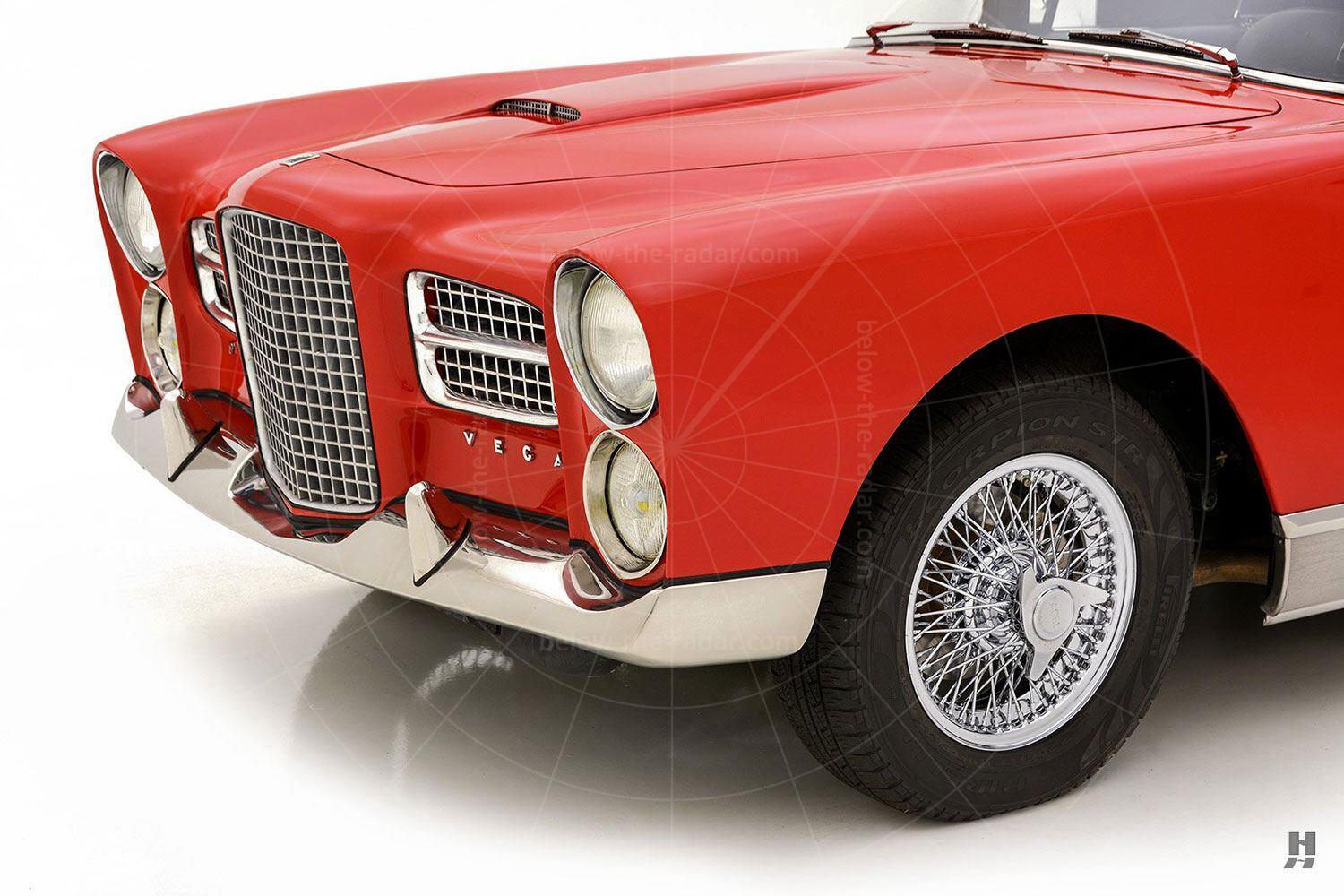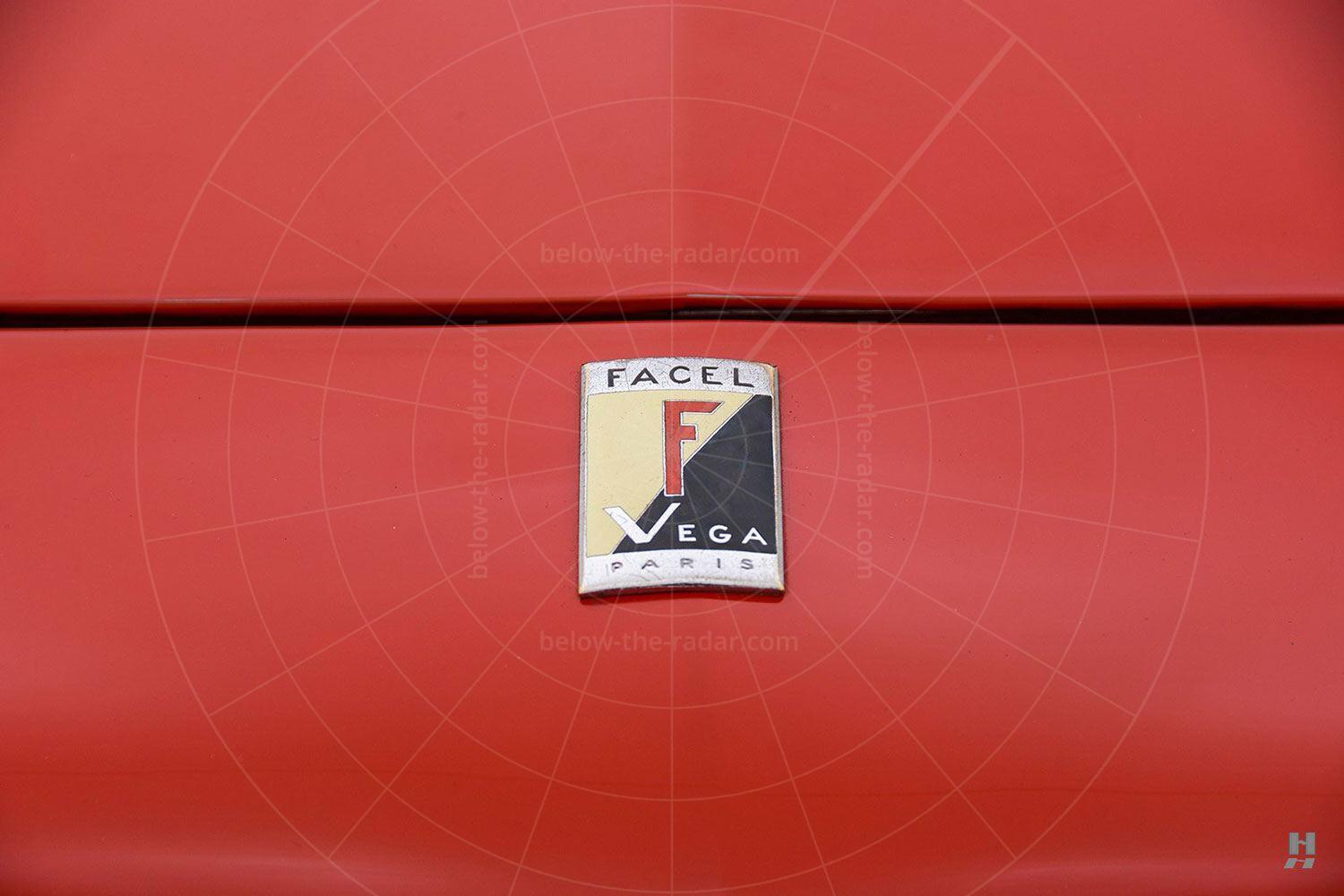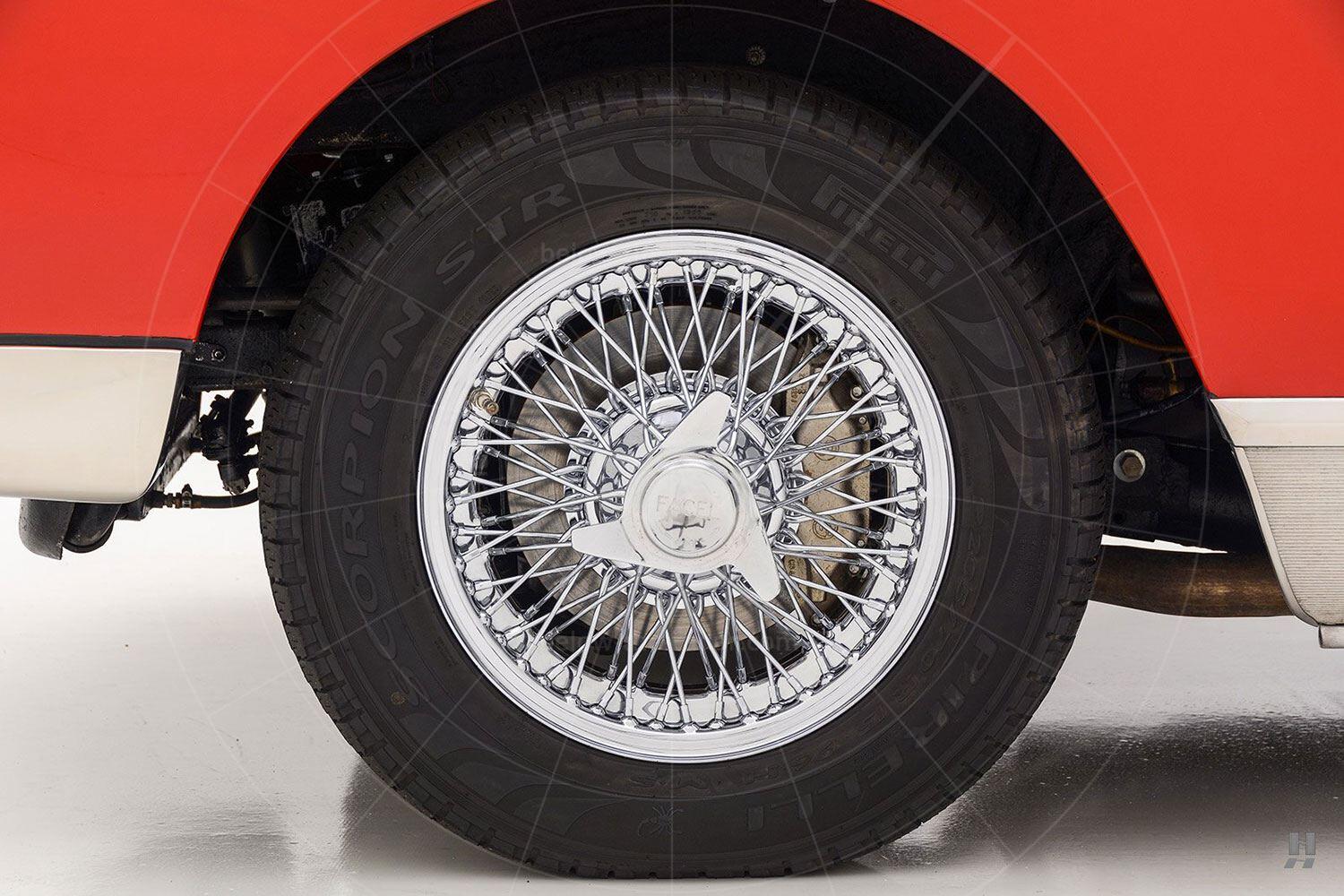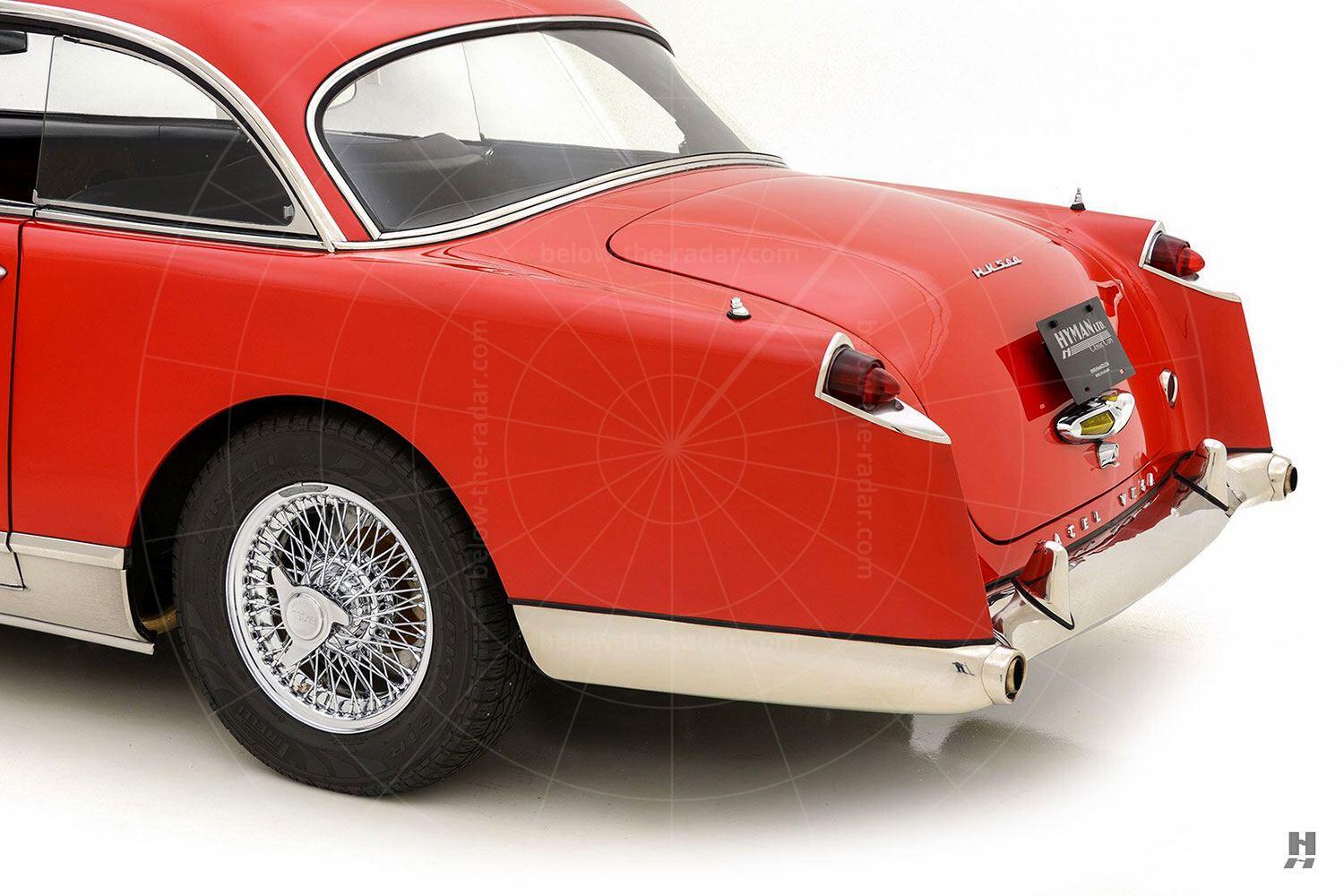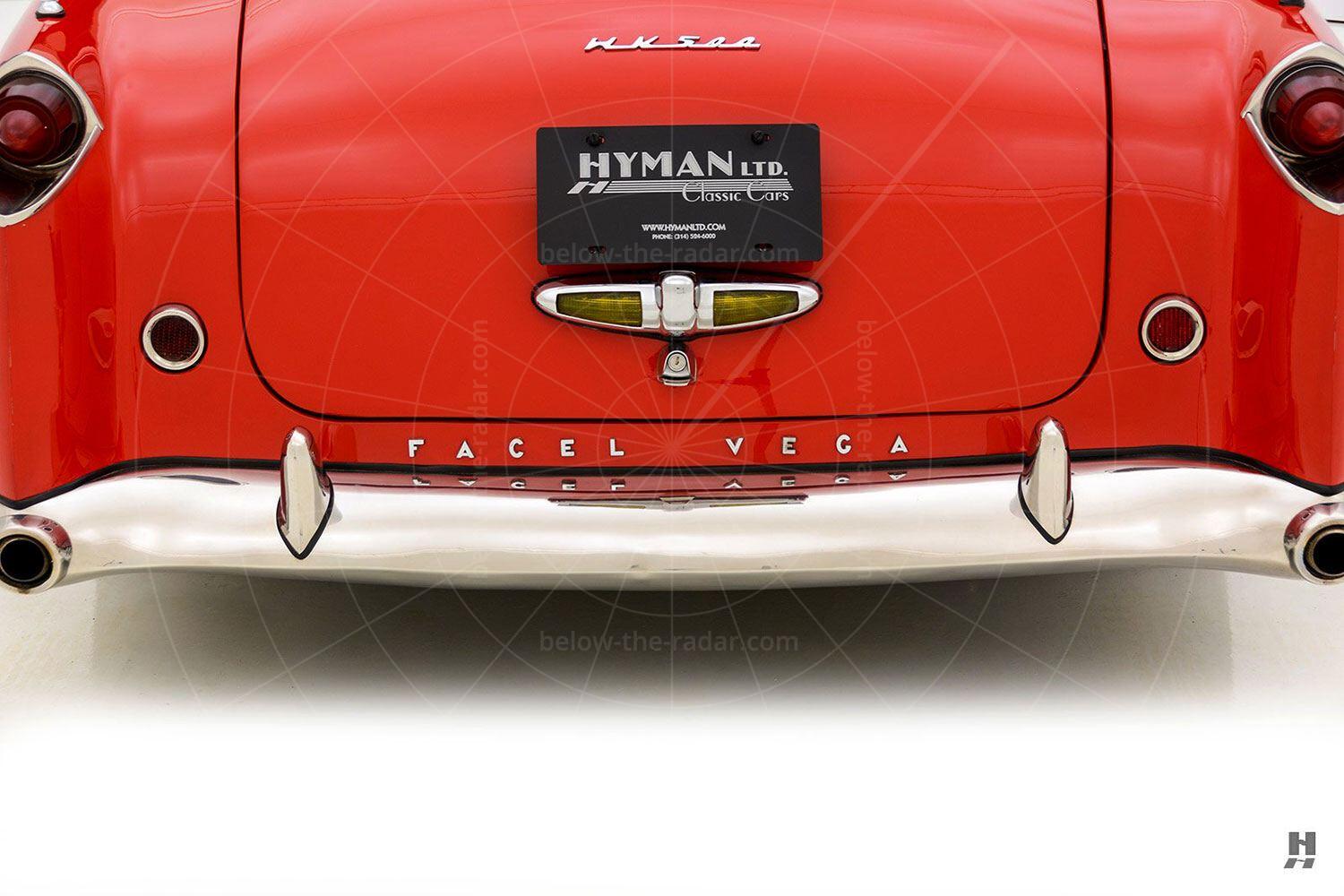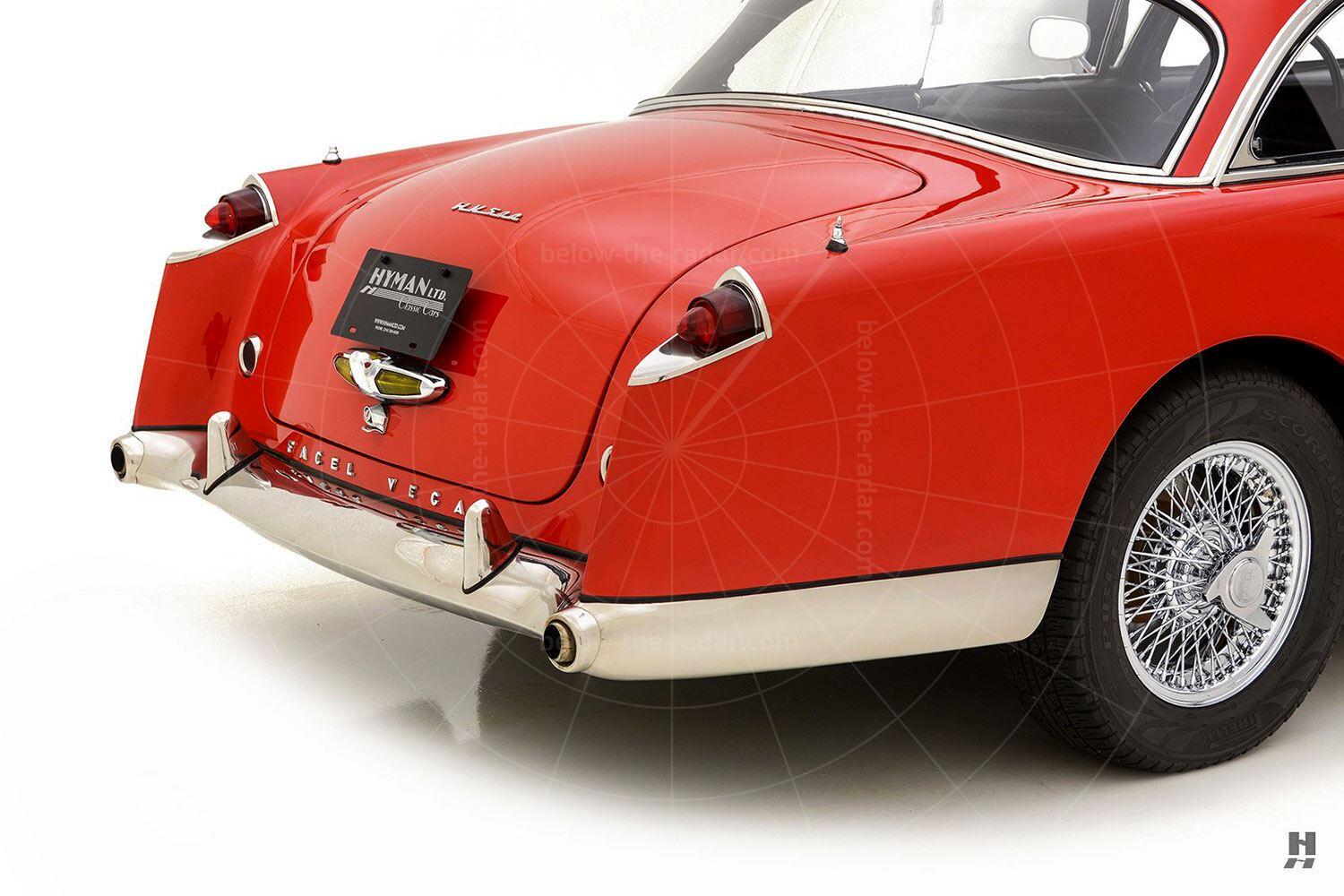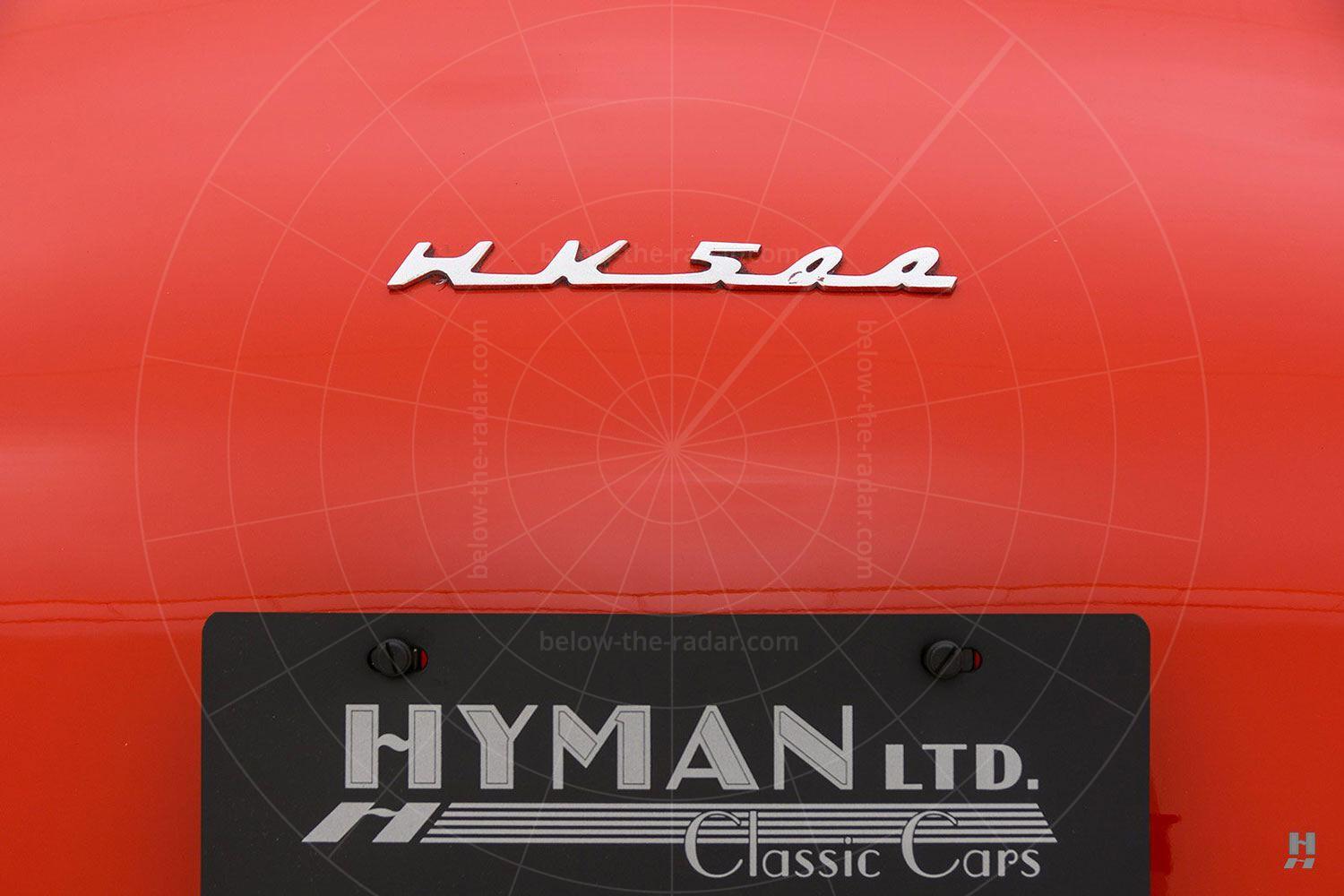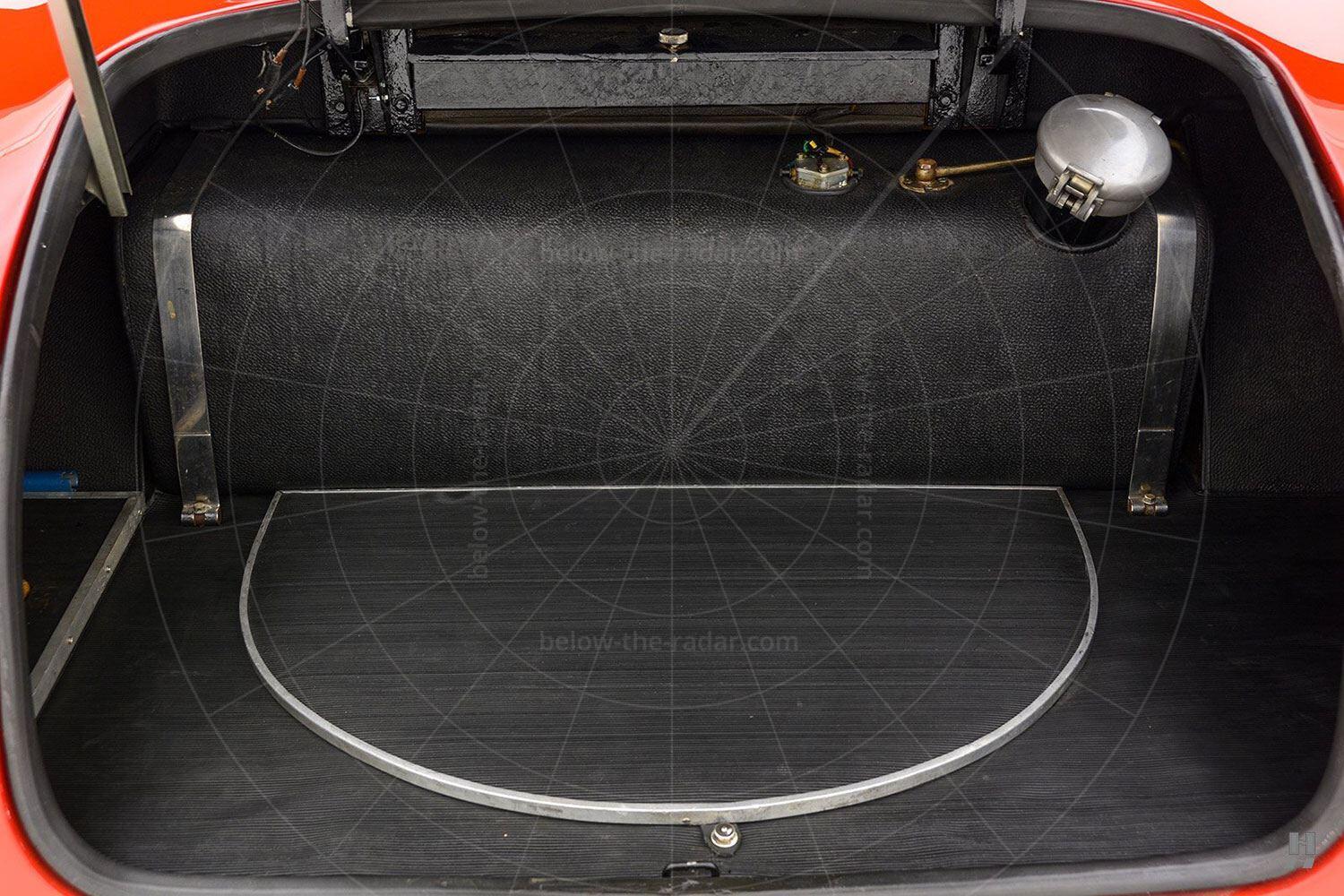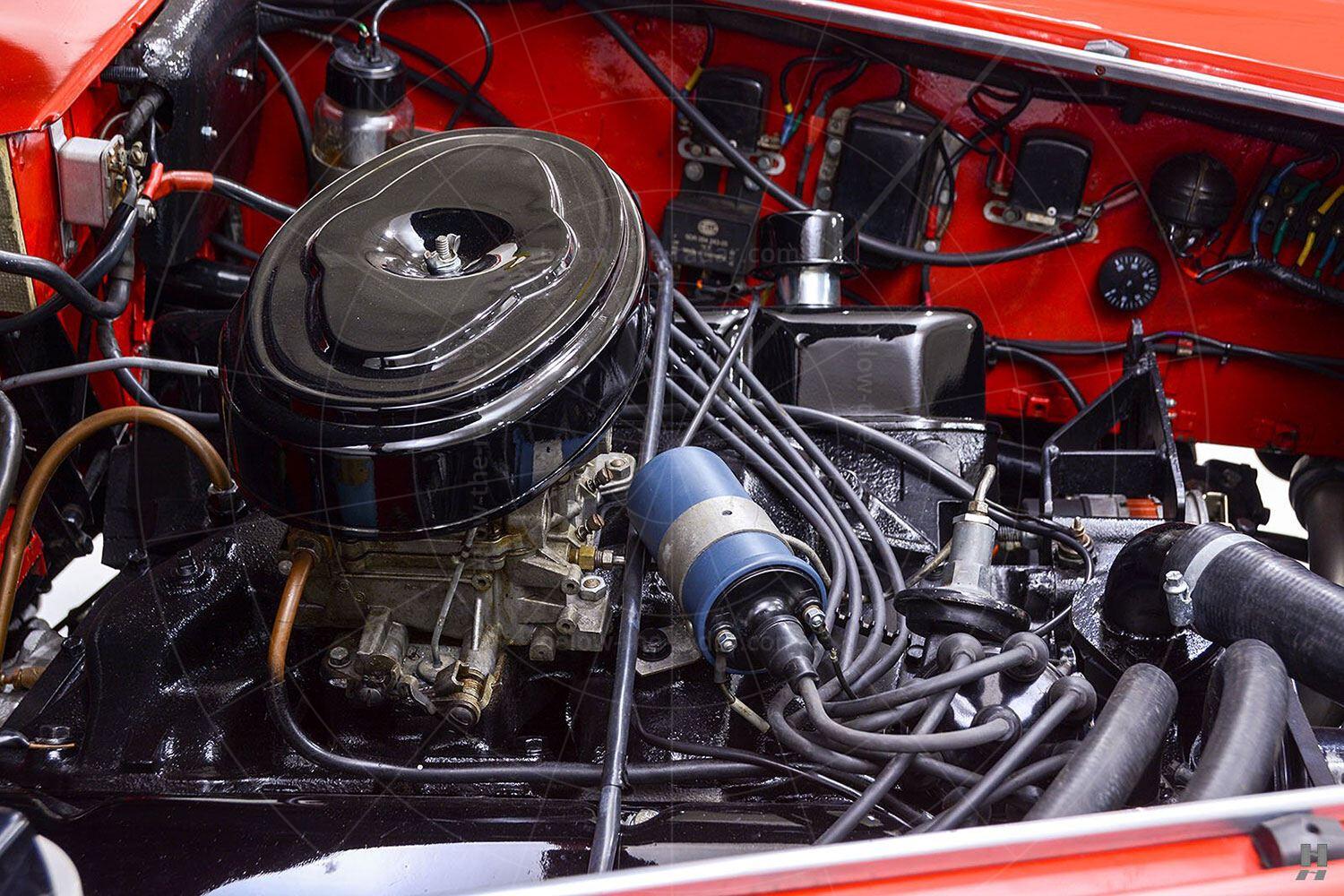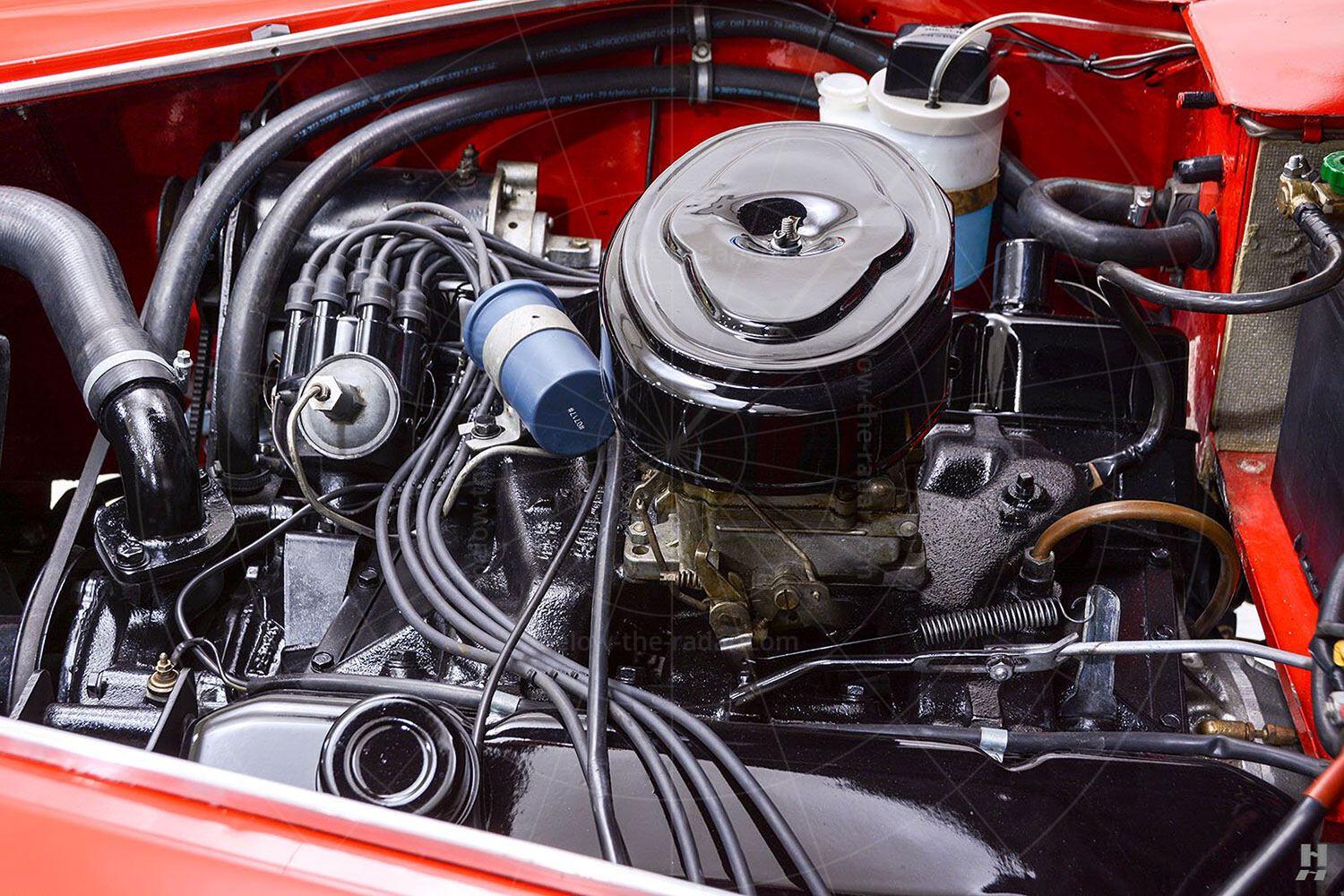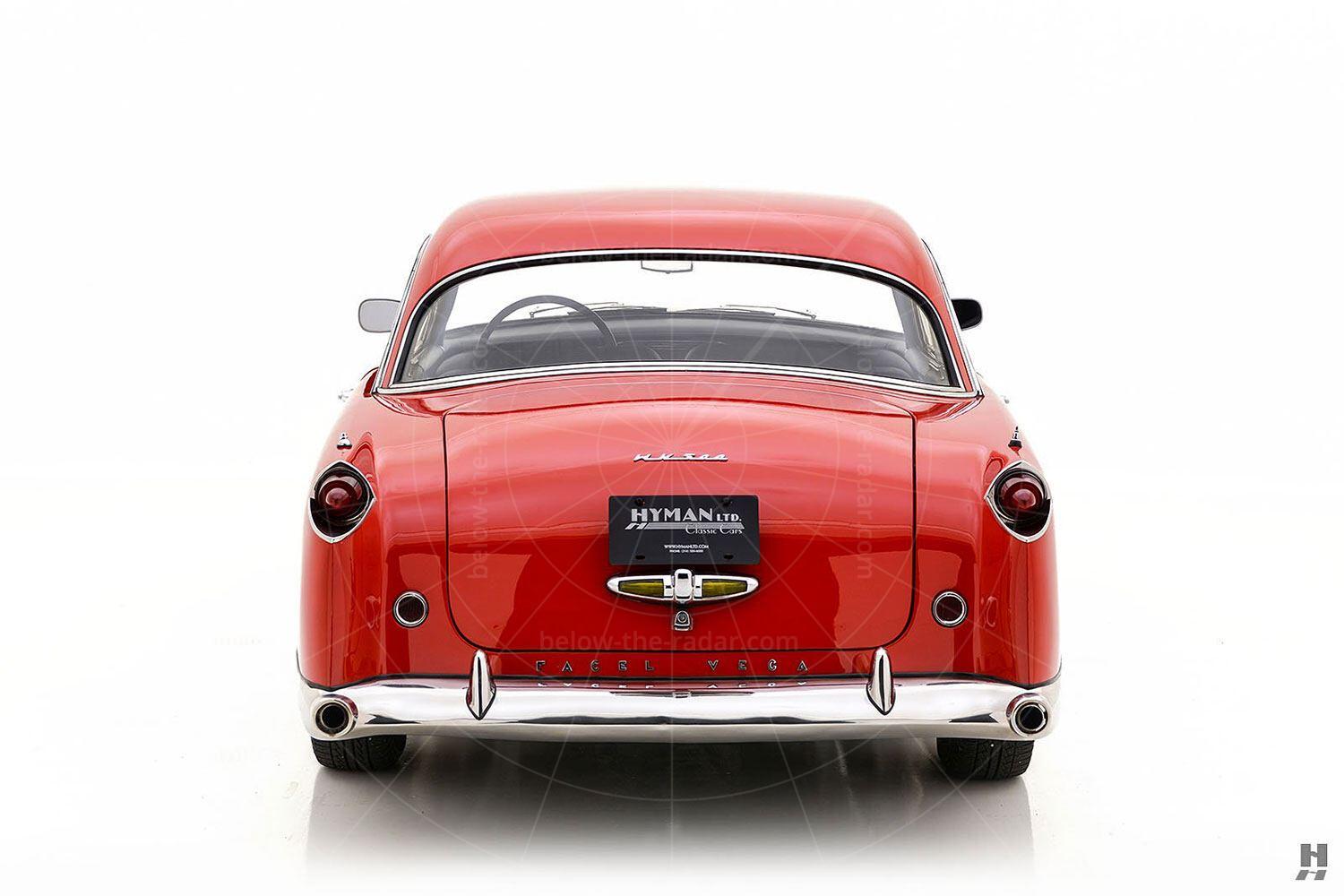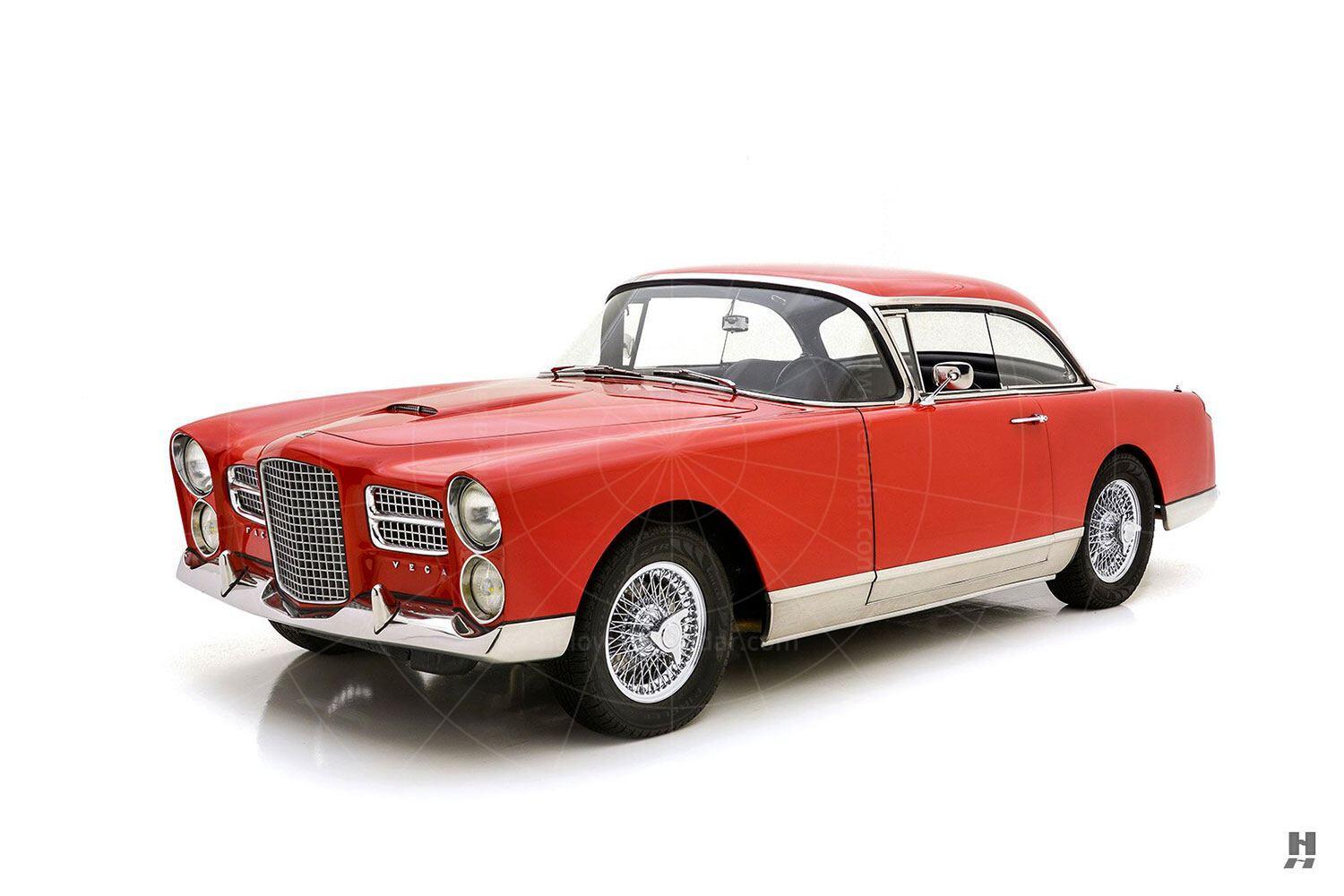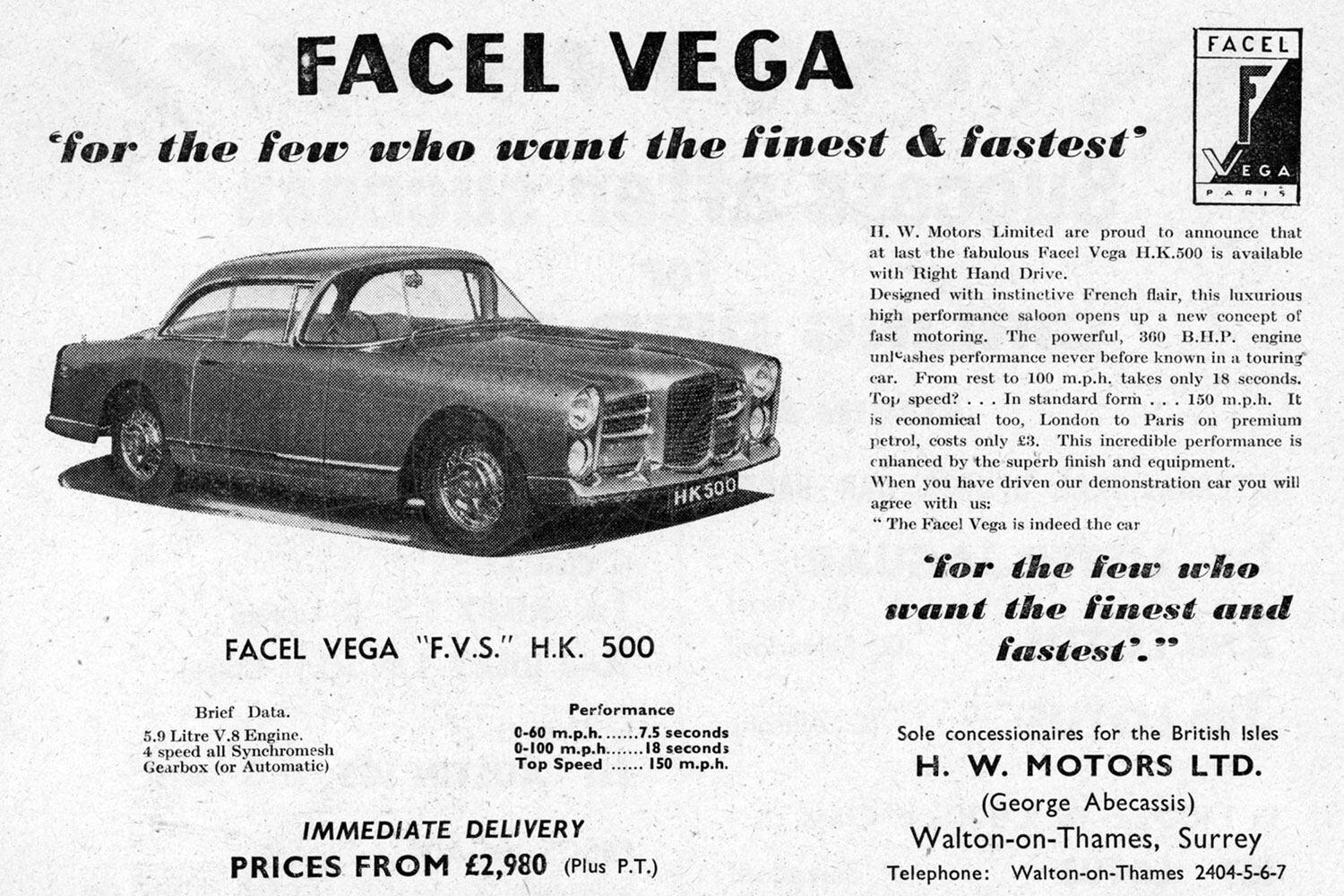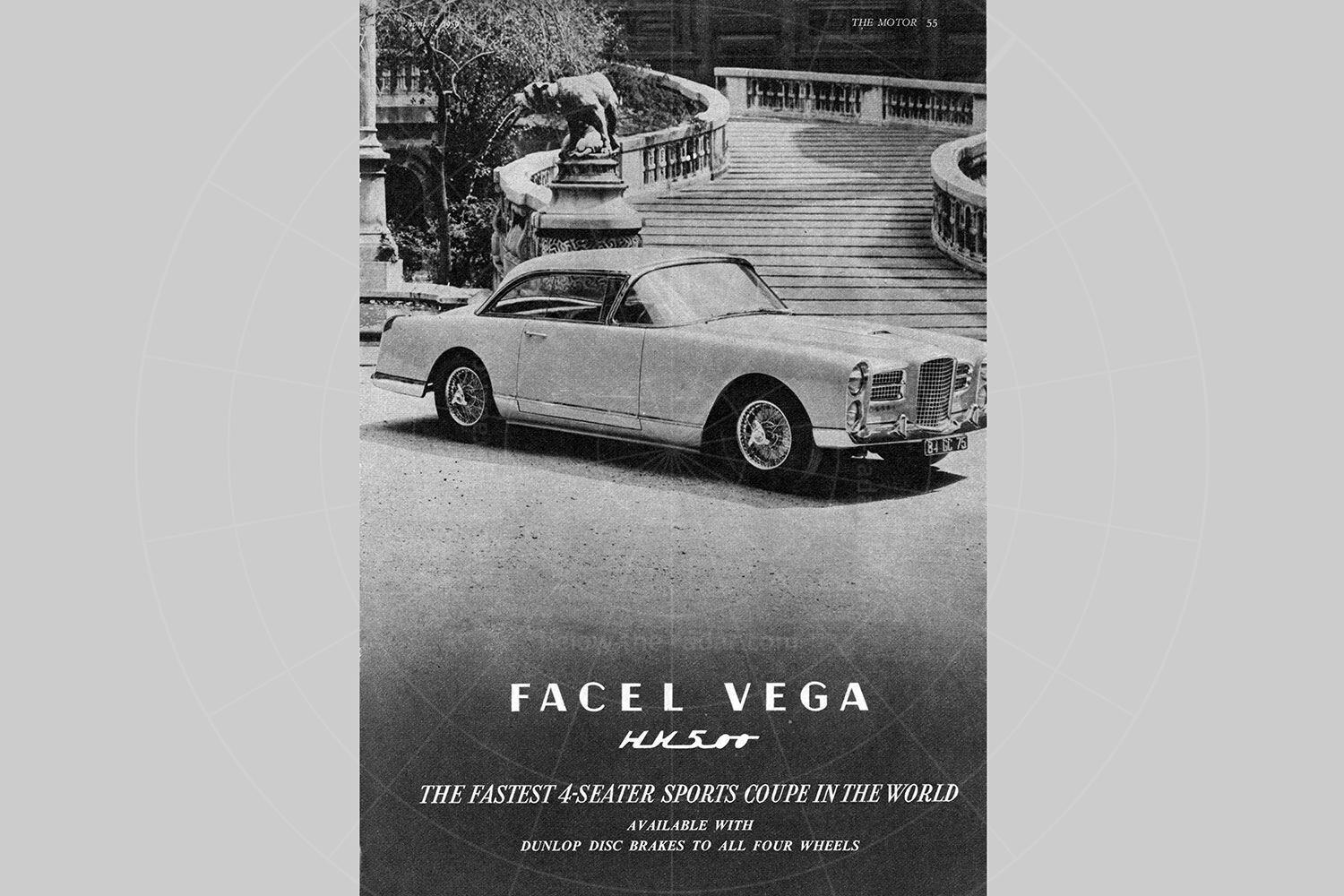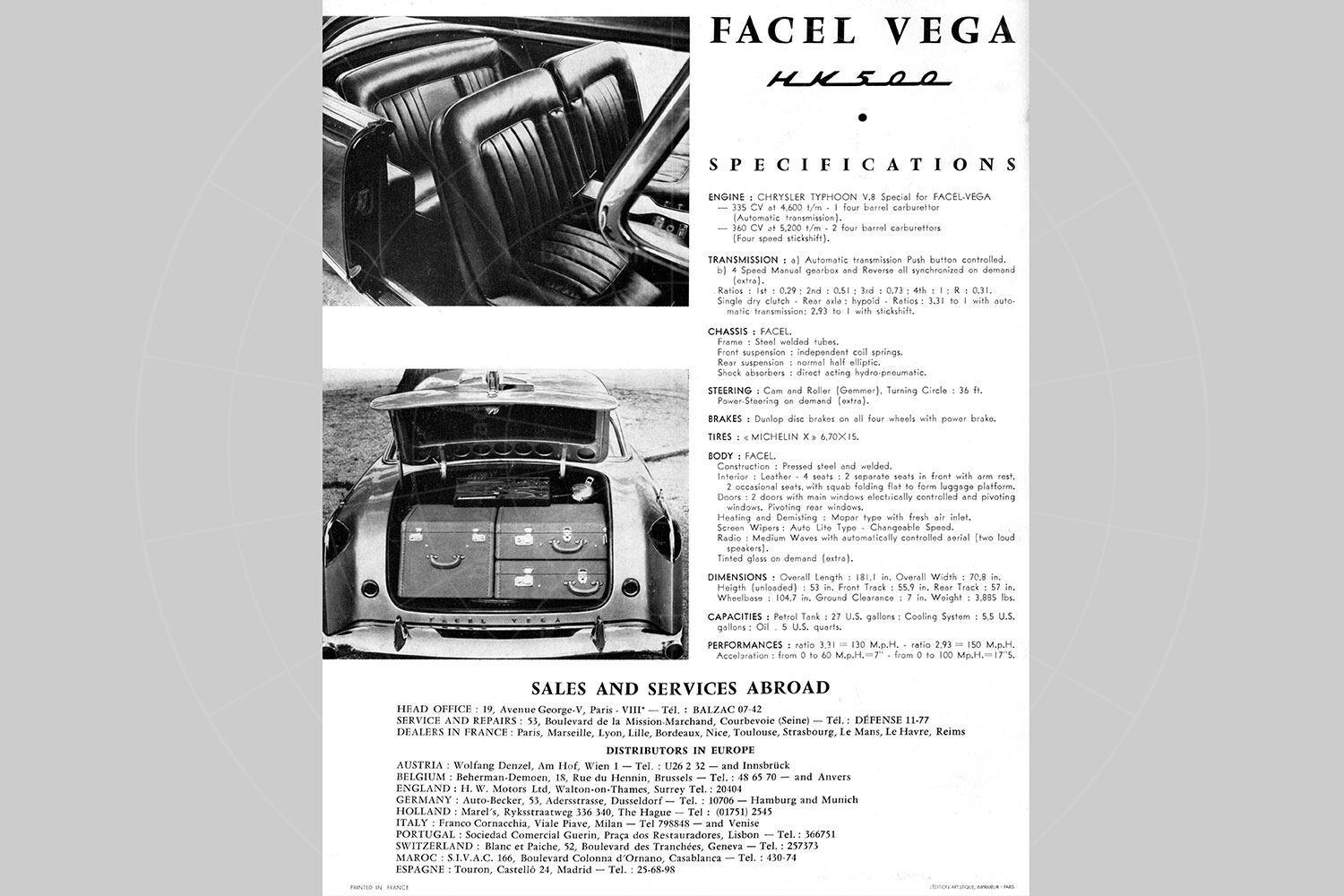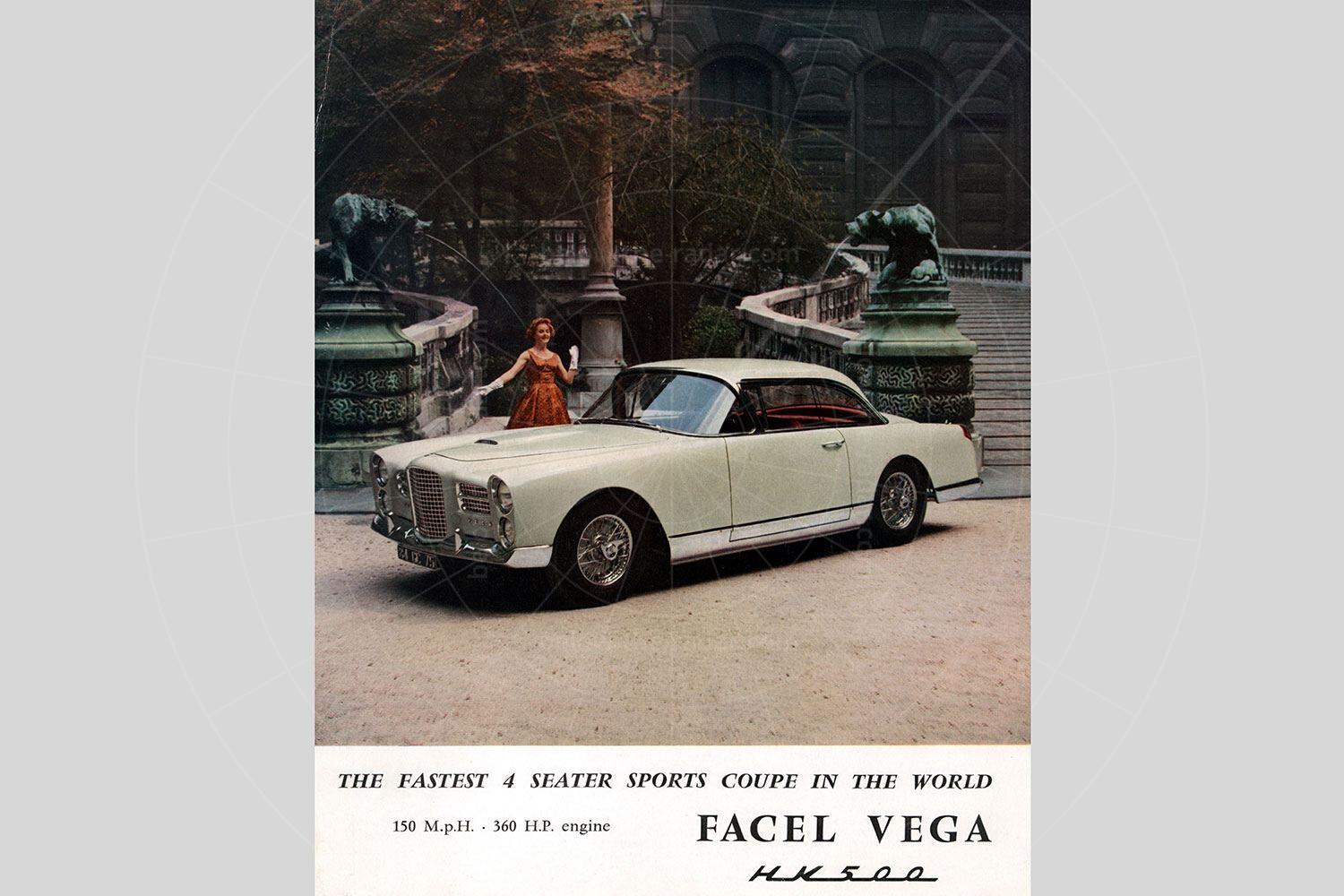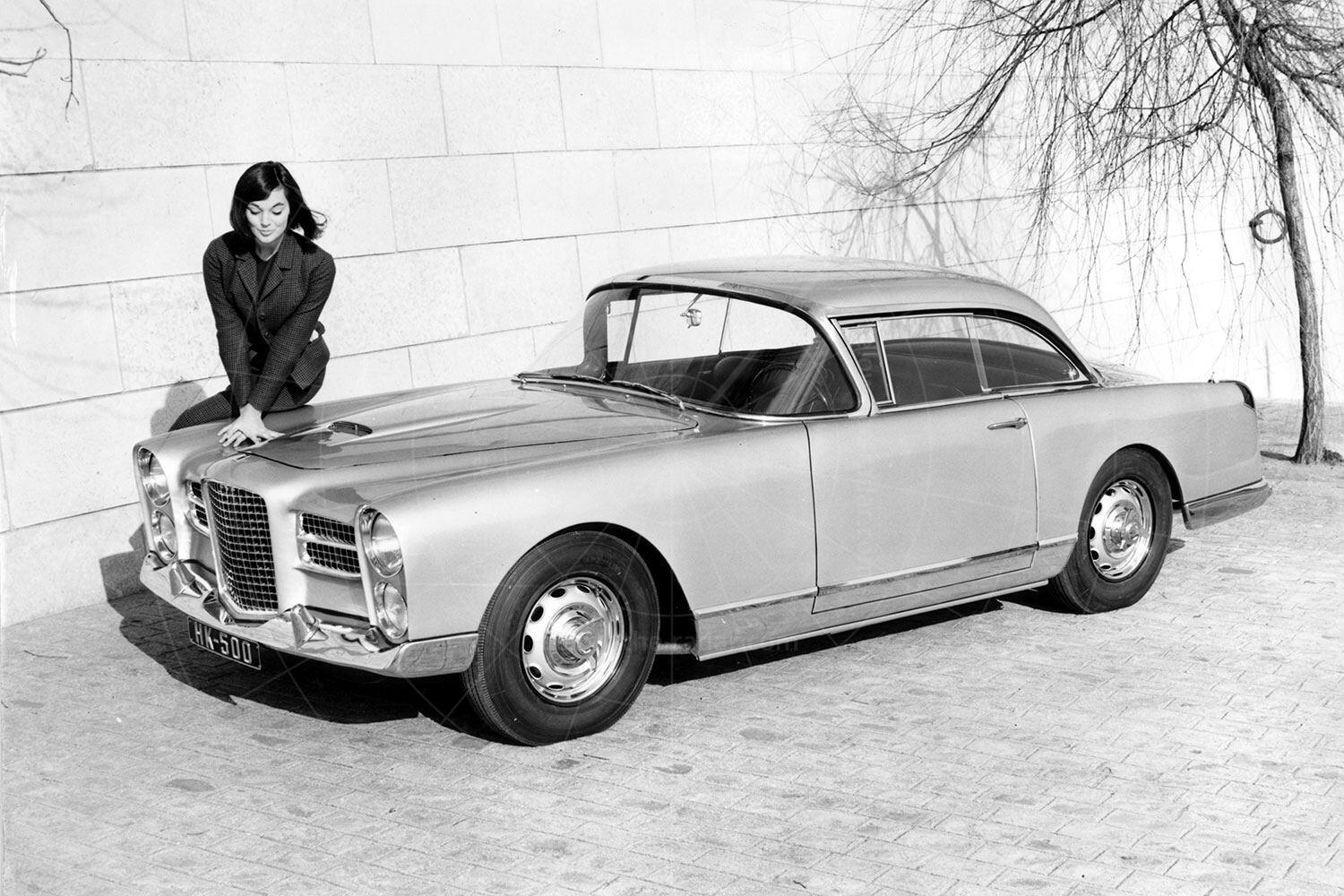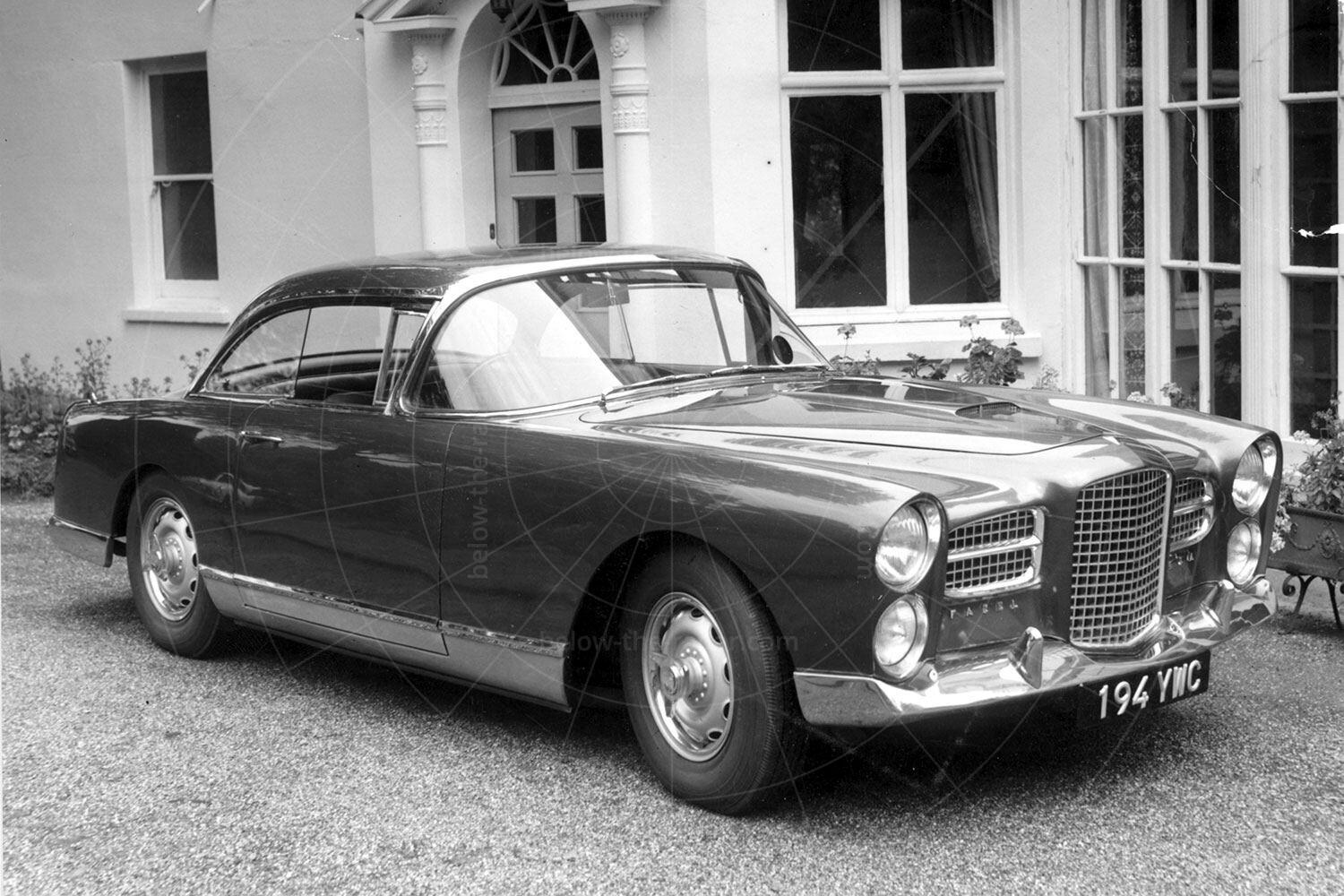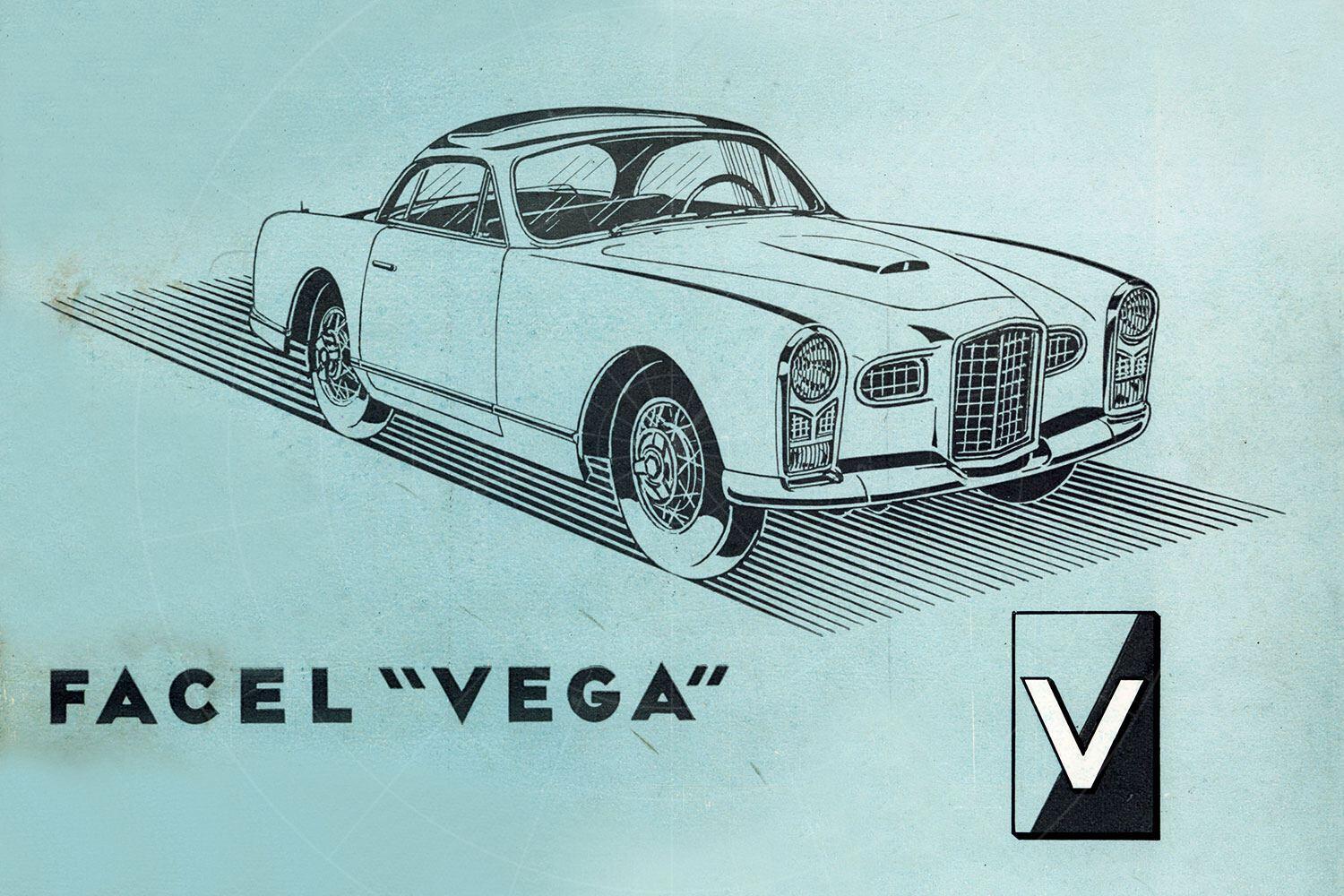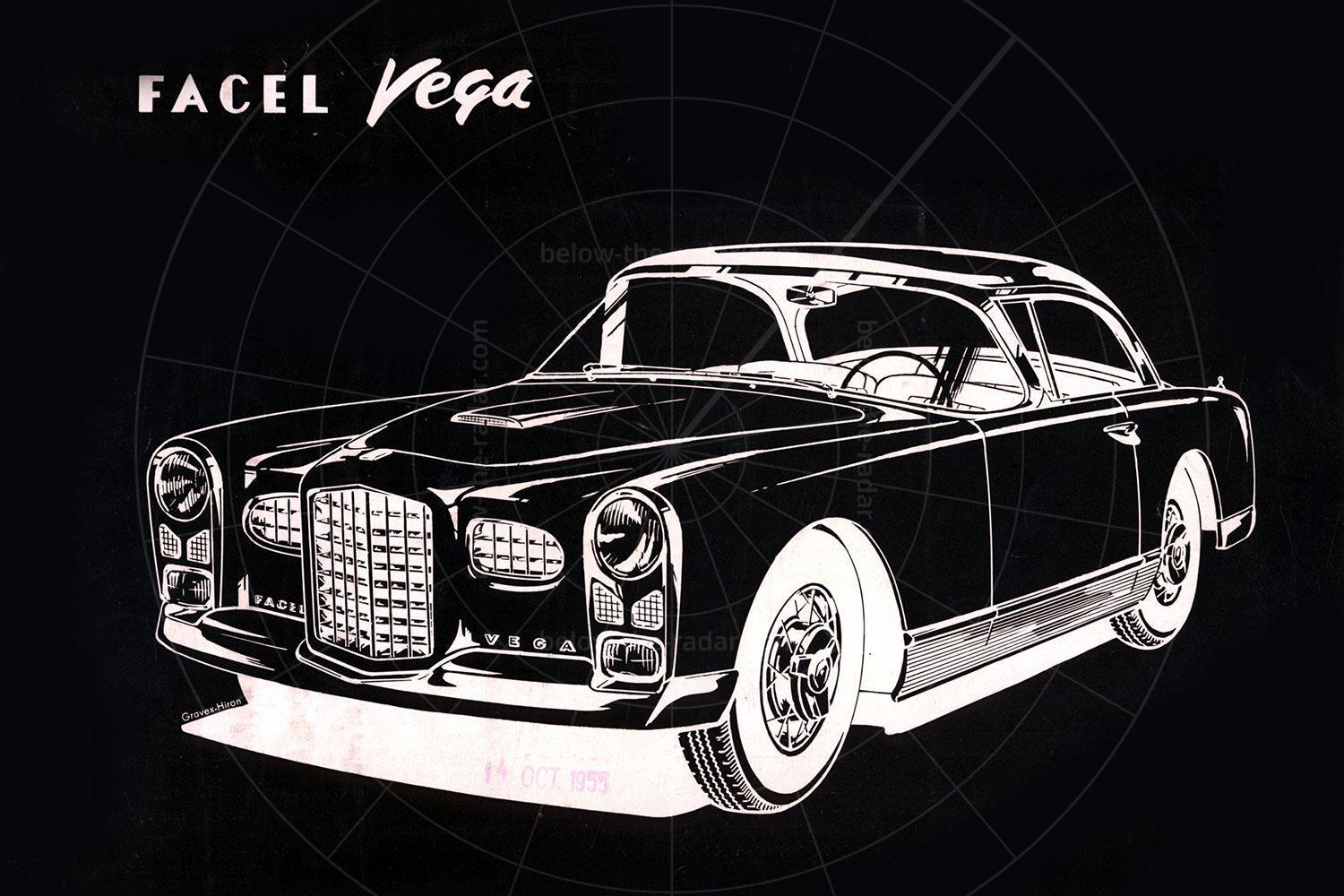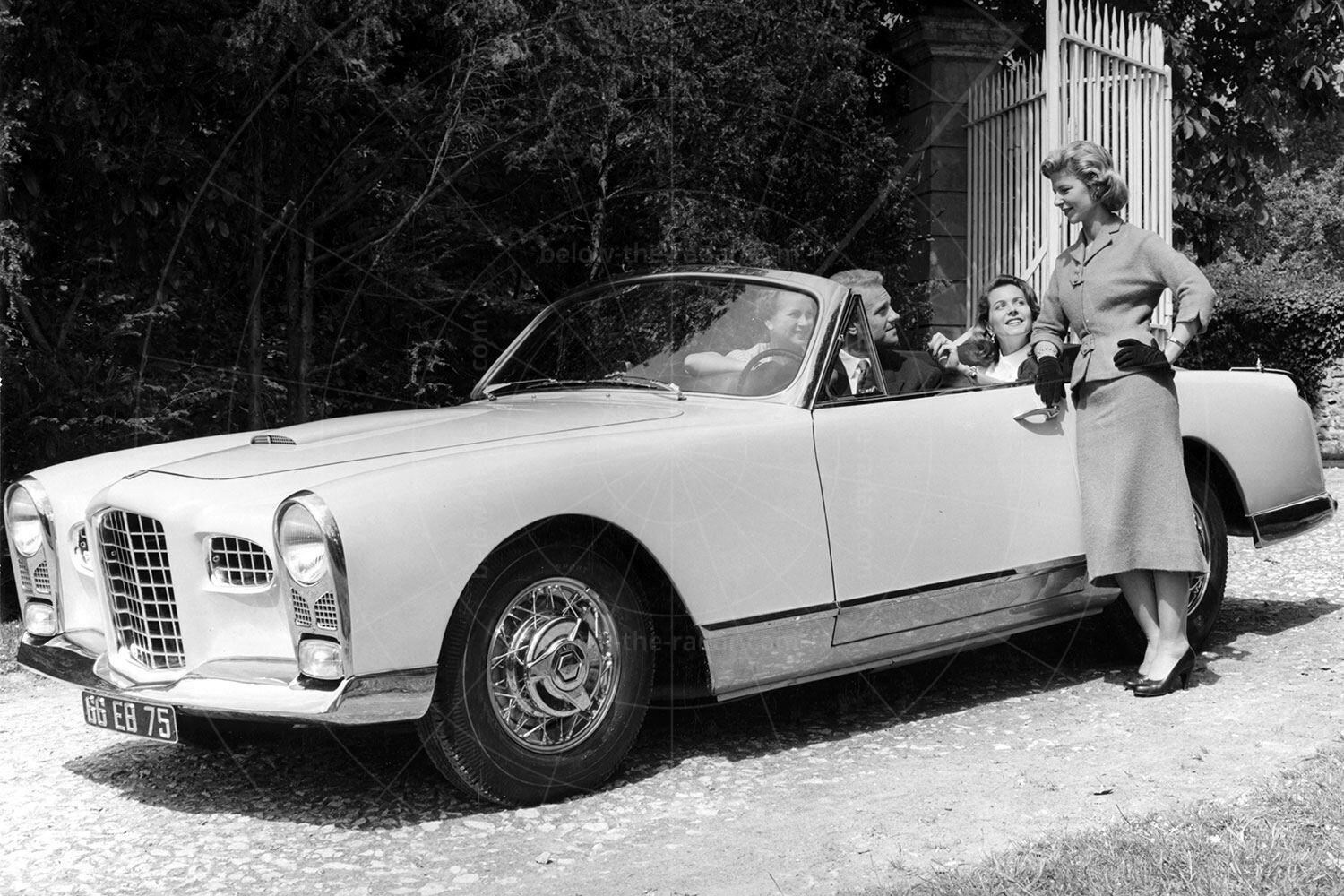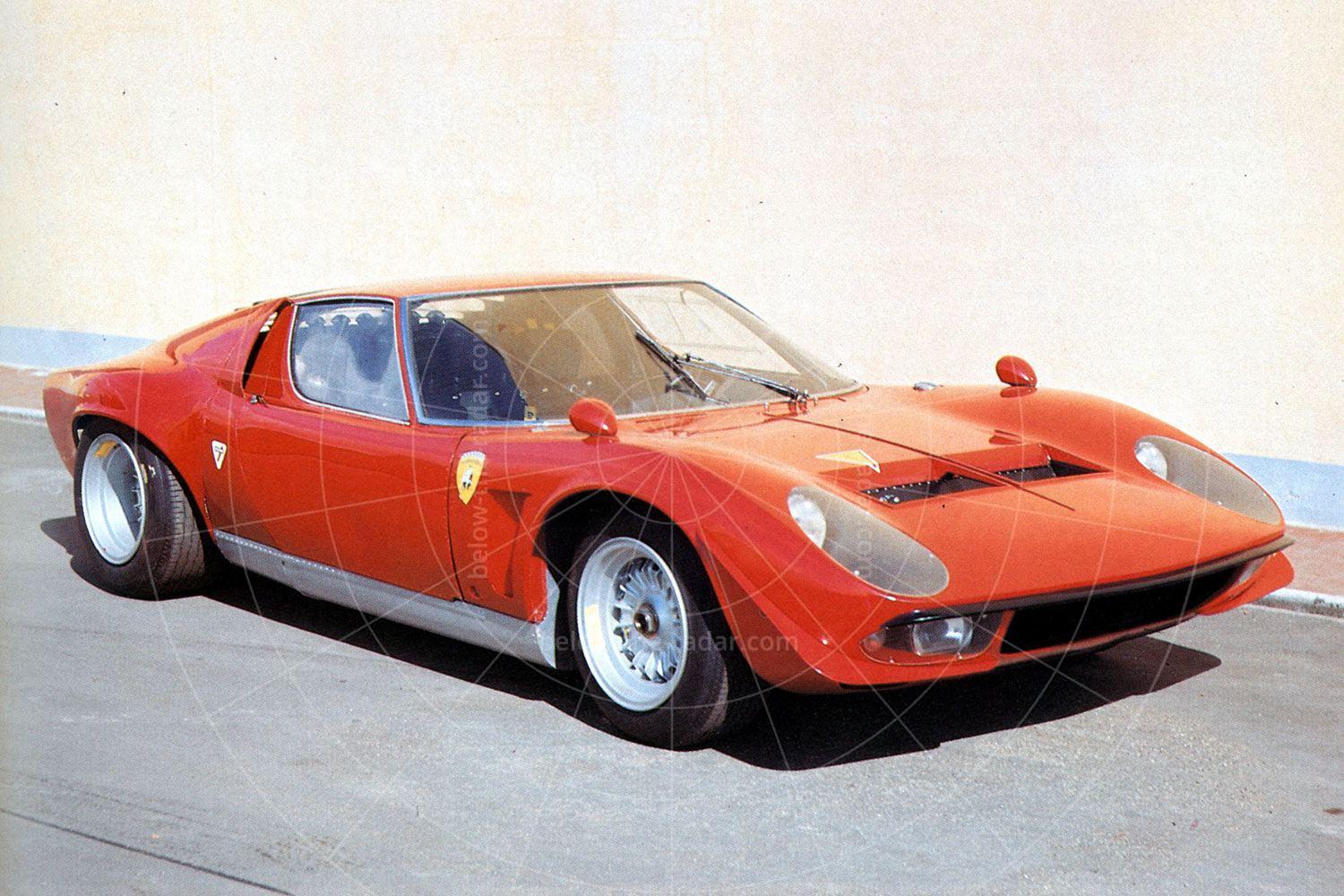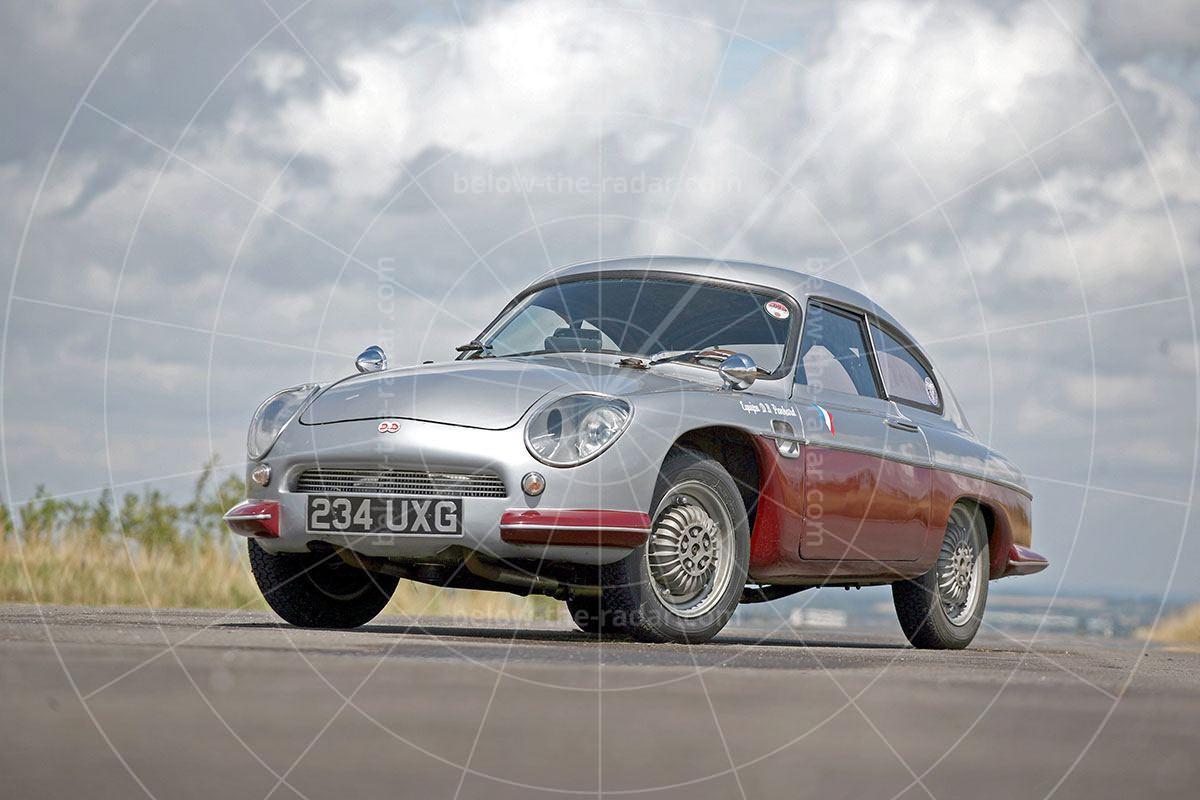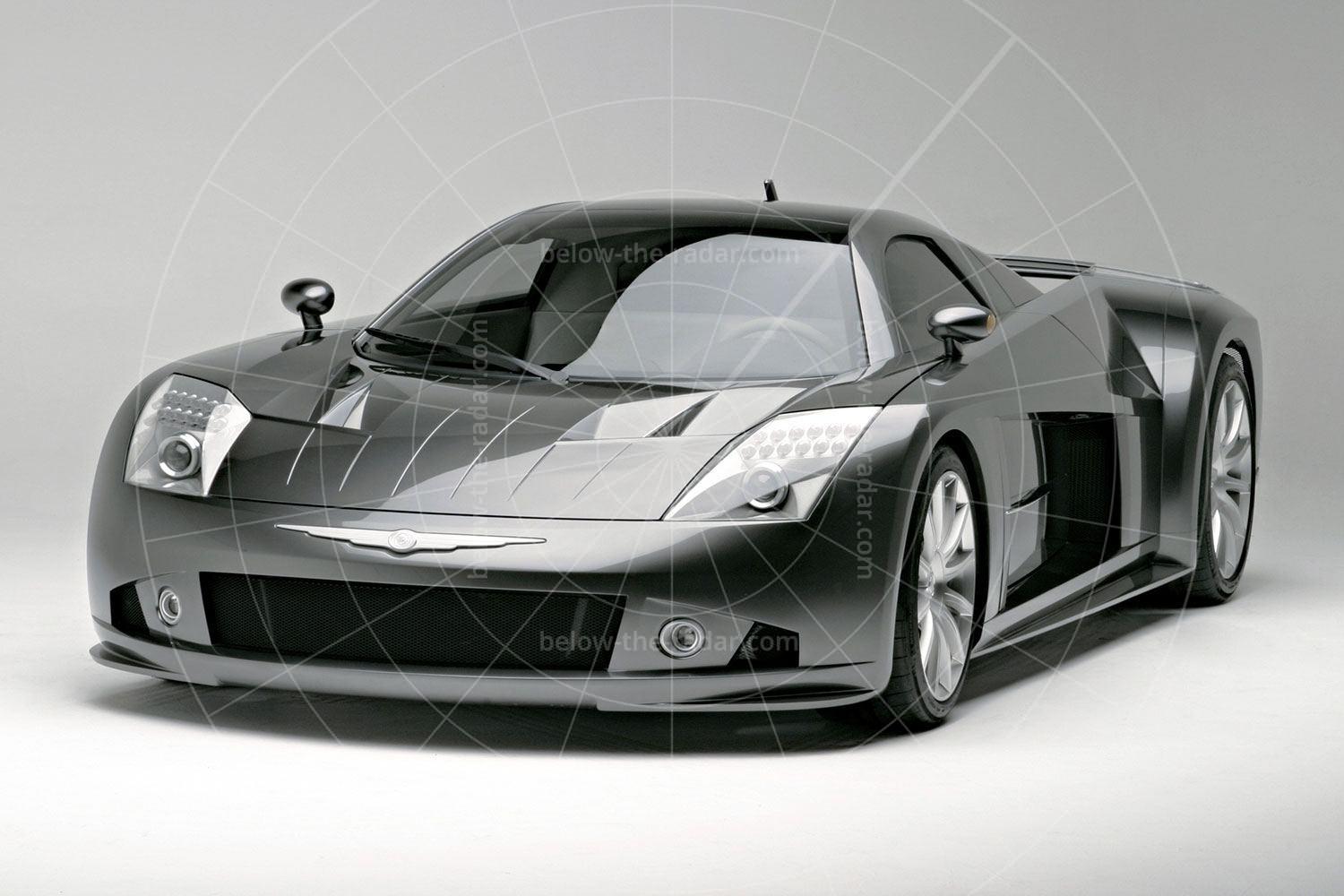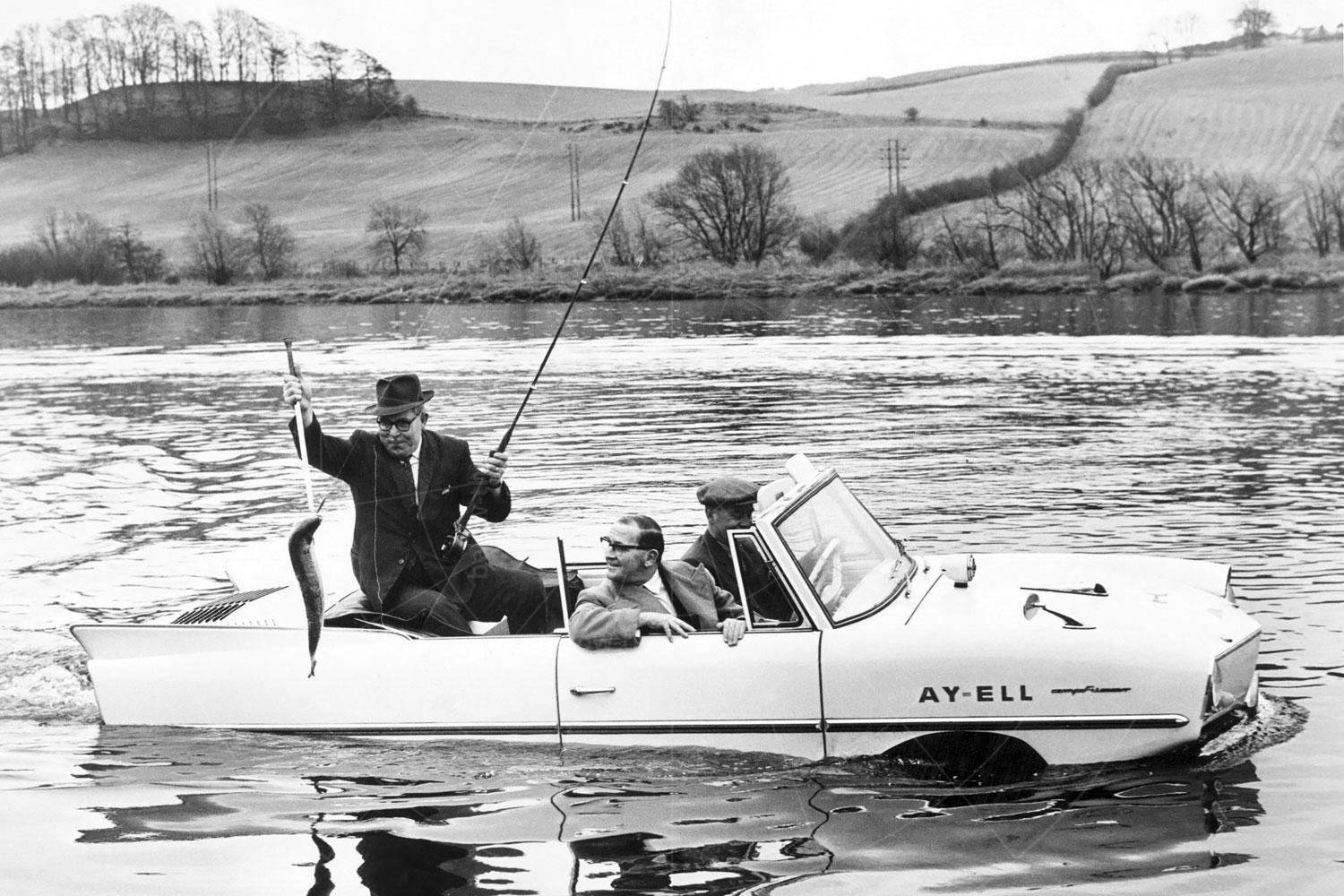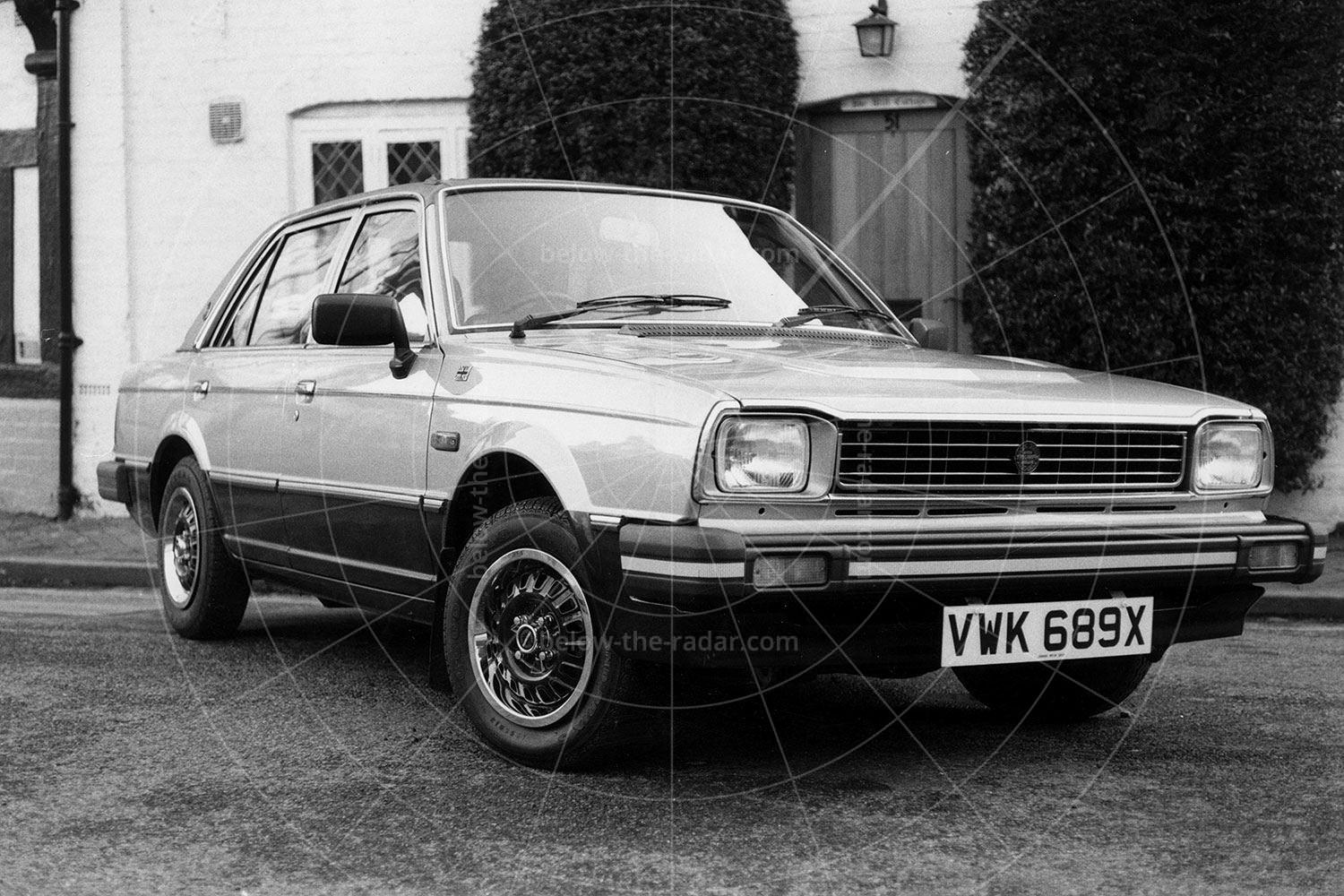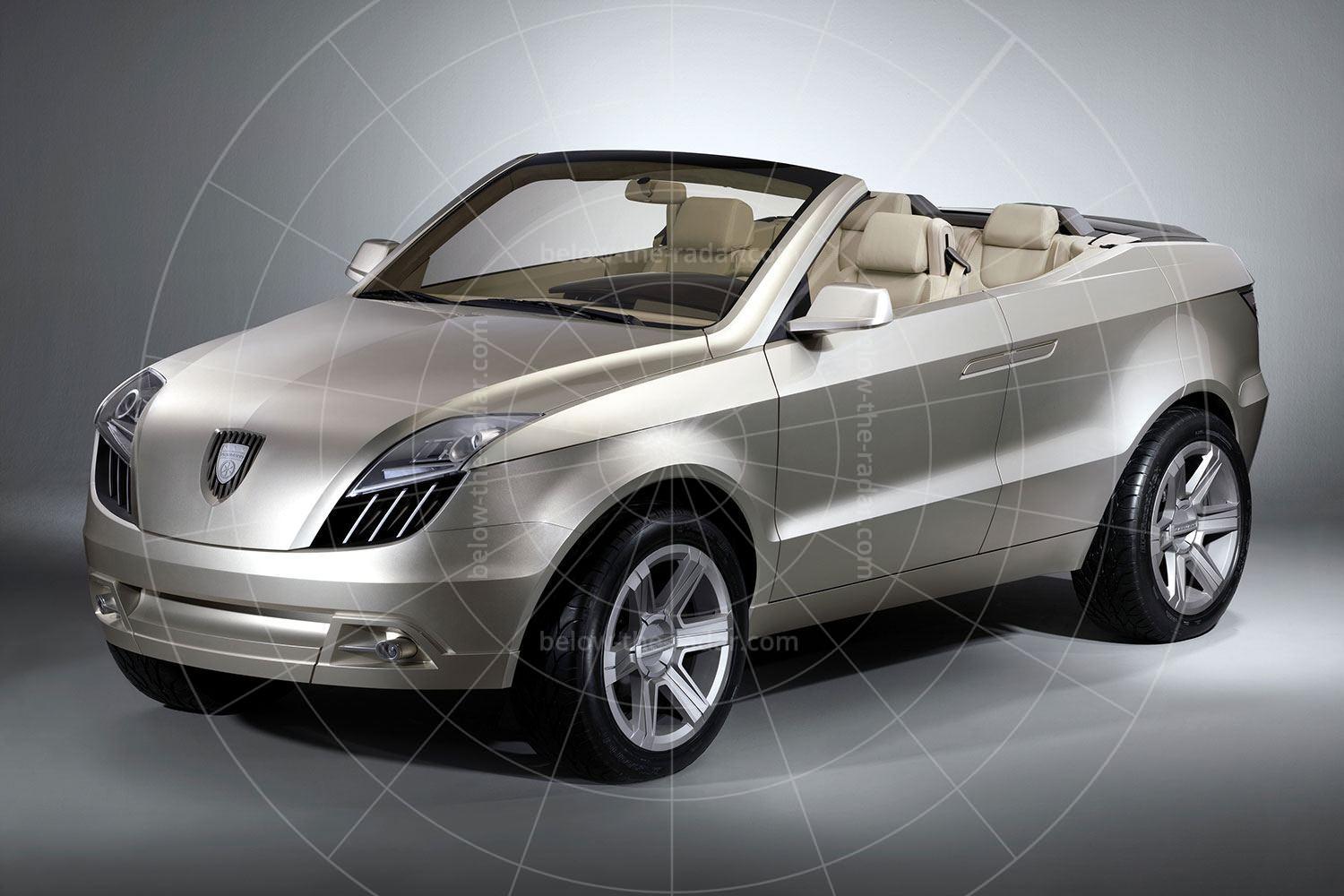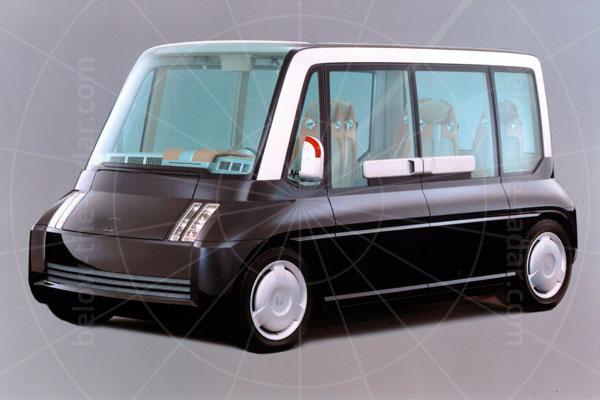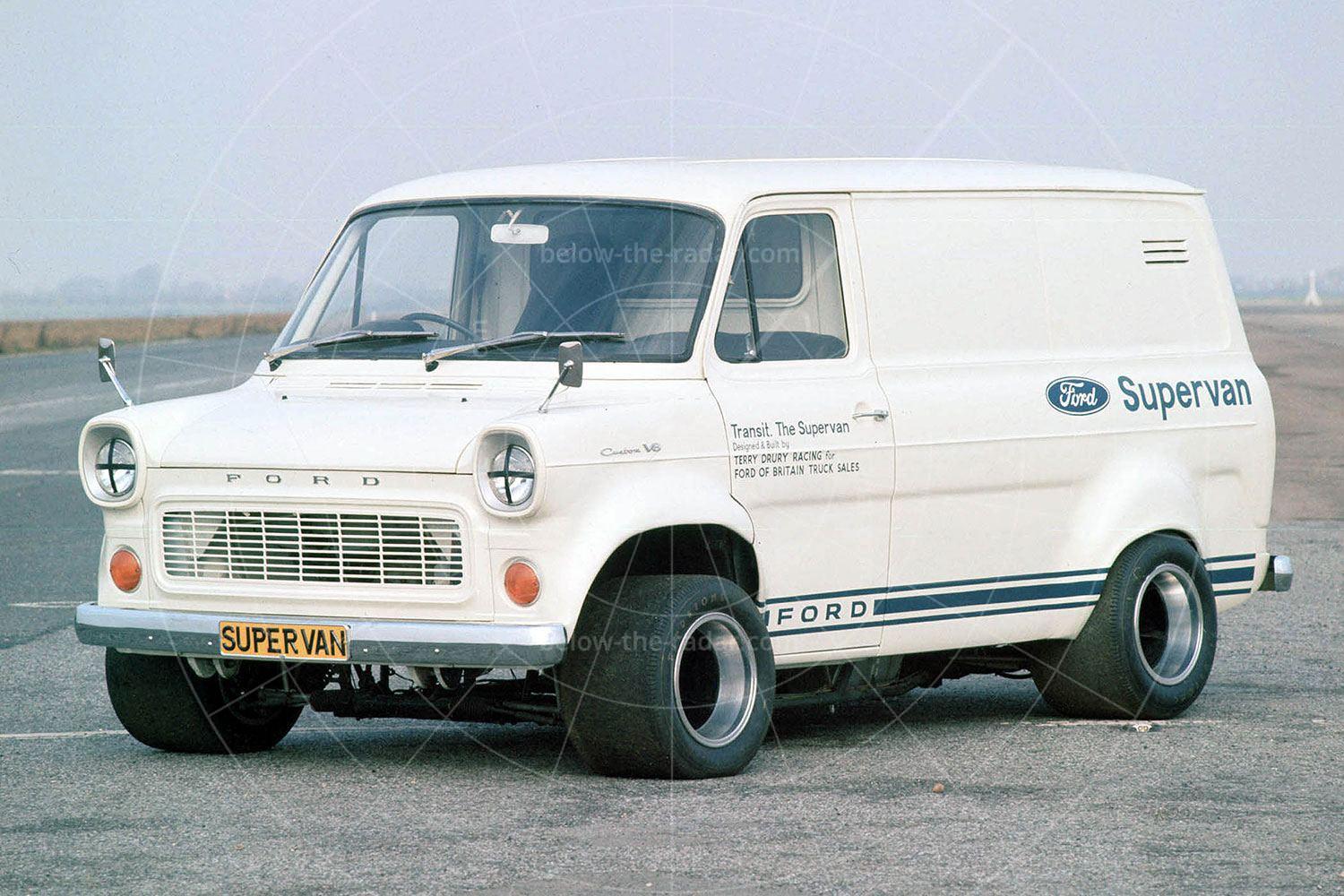Few marques are more enigmatic than Facel Vega, founded by Jean Daninos in 1939 as Forges et Ateliers de Construction d’Eure-et-Loir, to produce machine tools for the aircraft industry, and later bodyshells for Panhard, Simca and Ford. It also created vehicles under its own name for just a decade and despite its brief existence, almost 3000 cars were built in all, about half of which are thought to have survived.
By the time Facel Vega introduced its first car, grand routier concerns such as Delage and Delahaye were history, leaving Talbot Lago as the only French luxury car builder – but that was dead by 1959. In a unique position, sales of Facel Vegas boomed in France, Germany, the UK and the US; confirmed fans included the Shah of Iran and King Hassan II of Morocco, plus numerous celebrities such as Ava Gardner, Tony Curtis, Ringo Starr, Pablo Picasso, Christian Dior, Frank Sinatra and Stirling Moss.
Of all the V8 models offered by Facel Vega, it’s the HK500 that was built in the greatest numbers; by the time its predecessor the FV/FVS and its successor the Facel II are included, this line of V8 coupés accounted for about a third of the company’s total production. Fantastically expensive when new, for years these luxury coupés were incredibly underpriced, but in recent years collectors have latched on to them, boosting values enormously.
Before founding Facel, Daninos began his career in the automotive business, training at the right hand of André Citroen, where he helped design the revolutionary Traction Avant, an experience that would serve him well in the future. Daninos had a penchant for stylish luxury cars, a passion which led him to add a coachbuilding division to Facel's increasingly varied operations; this would become a fully-fledged car manufacturer in 1954, with the introduction of a V8-powered four-seater grand tourer.
Despite low build numbers and a production run of just six years (1955-1961), Facel Vega fitted no fewer than eight different Chrysler engines to this line of GTs. With such a convoluted timeline (summarised at the bottom of this page), I'll focus on the HK500 here, which was Facel Vega's most popular model and the first to be offered with right-hand drive; of the 490 examples built, 107 were right-hand drive. The HK500 was in production between 1959 and 1961, before the all-new Facel II took over.
Look back now and there's no shortage of European cars that used American V8 power, but when the FV was introduced it was unique in the marketplace. Bristol, Jensen and their rivals were yet to adopt American V8s, which provided cheap and reliable power that was ideally suited to luxury GTs. The HK500 continued with the use of a Chrysler V8, which in the case of the earliest examples was a 5907cc unit, with a claimed 360bhp, along with 400lb ft for relaxed long-distance cruising. It didn't take long for Facel Vega to upgrade the V8 to a 6286cc unit, rated at 330bhp if the three-speed Chrysler Torqueflite automatic transmission was chosen, but for anybody who paid extra for the Pont-A-Mousson four-speed manual transmission, the power was upped to 360bhp.
Just like the FVS that had preceded it, the HK500 had drum brakes that were hopelessly under-powered, leading to poor press reviews. As part of its 1958 review of an FVS, The Autocar commented: "Brake pedal travel was excessive, and for a quick stop it had to be pumped... there was a considerable increase in pedal load and some fade during performance testing. Ultimately the makers must follow the lead of British manufacturers by fitting discs instead of drums".
Facel Vega was effectively shamed into fitting Dunlop disc brakes to the HK500 from 1959, albeit as an extra-cost option, although they were standard from 1960.
In February 1959, The Autocar tested an HK500 with the optional disc brakes and was rather more upbeat after its previous experience. The magazine said: "These go without saying, and any prospective owner who wants to make full use of the car's tremendous performance potential will want them for their smooth, powerful action and resistance to fade.
"With so much power under the bonnet the delightful Pont-A-Mousson 4-speed gearbox scarcely needs to be used if the driver is not in zestful mood, for the car will still cover the ground very quickly indeed; it would be hard to find another make which can put so many miles behind it in a motoring day with so little effort".
What made the HK500's performance even more impressive was its generous kerb weight of 3855lb (1752kg). Unfortunately, despite its heaviness the HK500's bodyshell wasn't all that strong, and if it was driven hard over poor surfaces it could twist to the point that its wraparound windscreen cracked.
While the HK500 was undoubtedly a success for Facel Vega, by the time production ended in mid-1961 it had effectively been in production since 1955, albeit under different names (FV and then FVS). So a replacement was overdue by the time the Facel II took over in 1961. That would have a production run of just three years though, before Facel Vega went bust as a result of warranty claims for its massively problematic Facellia which suffered from failures of its in-house engine.
The FV/FVS/HK500 timeline
Only prototypes were made in 1954, but in March 1955 Facel delivered its first customer car, a four-seater two-door grand tourer. At first the marque was known as Facel with the model named the Vega, but in retrospect these first cars would become known as the FV for Facel Vega. Here's a brief overview of the convoluted model line-up.
FV (March 1955 - May 1955)
Production total: 11 coupés (9 auto, 2 manual)
Engine: 4528cc De Soto Hemi V8
FV1 (May 1955 - November 1955)
Similar to FV, but 12cm longer and with a different roof line.
Production total: 32 (25 coupés, 7 convertibles)
Engine: 4770cc Hemi V8
FV2 (November 1955 - March 1956)
As FV1 but with a wraparound windscreen in place of the previous more conventional glass
Production total: 30 (29 coupés, 1 convertible)
Engine: 4770cc Hemi V8
FV2B (March 1956 - October 1956)
As FV2 but with 12-volt electrics (previously 6-volt) and stacked headlights
Production total: 74 (72 coupés, 2 convertibles)
Engine: 5413cc Hemi V8
FV3 (November 1956 - July 1957)
As FV2B but with a smaller Chrysler V8
Production total: 48 (47 coupés, 1 convertible)
Engine: 4527cc Polyspherical V8
FV3B (March 1957 - June 1958)
Production alternated with the FV4. The FV3B got a bigger engine and Chrysler's three-speed push-button Torqueflite automatic transmission was adopted. The first 12 cars wre the same dimensions as previous iterations, but then the length grew by 2cm and the width by 4cm.
Production total: 90 coupés (46 auto, 44 manual)
Engine: 4940cc Polyspherical V8
FV4 (May 1957 - February 1958)
Essentially (but unofficially) a US-market FV3B, initially with 5801cc Hemi power; from November 1957 this was upgraded to a 6430cc unit.
Production total: 67 coupés (59 auto, 8 manual)
| Vital statistics | |
|---|---|
| Produced | 1959-1961, France |
| Number built | 490 |
| Engine | Front-mounted, 5907cc/6286cc, V8 |
| Transmission | 4-speed manual or 3-speed auto |
| Power | 360bhp at 5400rpm |
| Torque | 400lb ft |
| Top speed | 142mph |
| 0-60mph | 8.4 seconds |
| Price | £4739 (1960) |
Many thanks to Hyman Ltd for the use of its pictures in this article.

